
Born in Rio de Janeiro in 1929, Celeida Tostes graduated from the Escola Nacional de Belas Artes in 1955. A few years later, she was awarded a scholarship from the US government to study at the University of Southern California, where she could deepen and expand her knowledge on industrial ceramic techniques. Still on America, Celeida was assisted the artist Maria Martinez, a fundamental opportunity to definitely bring her closer to working with clay. In parallel with her artistic work, she acted throughout her life as a teacher in academic activities. In 1975, she began teaching at the School of Visual Arts at Parque Lage, where she taught for over 20 years. At the beginning of the 1980s, the artist started working with the community of Morro do Chapéu Mangueira, coordinating the project Formation of Utilitarian Ceramics Centers in the Communities of the Urban Periphery of Rio de Janeiro, instructing groups of residents from the community on how to work with and create using local clay. A few years later, she taught at the School of Fine Arts at the Federal University of Rio de Janeiro, from 1989 to 1992. In 1996, shortly after her death, Celeida Tostes was honored at the II Barro de América Biennial, in Caracas, Venezuela. .
Femininity — as well as the themes related to it: fertility, sexuality, motherhood, fragility, resistance, birth, death and the body — is a guiding thread in the artist’s work, who chose clay as the fundamental raw material of her work. In experimenting with the material, the artist extrapolates the notion of use and functionality: with gestures marked by repetition and insistence, Celeida transforms clay into a ceramic body. Theme and raw material complement each other, the relationship with the earth, with the organic, the inorganic, the animal, the vegetable, the bodies. In Passagem (1979), for example, she records a rite in which she is wrapped in a clay amphora with the help of two assistants. Completely covered by clay, the artist then escapes, breaking the structure and slipping out of this symbolic womb: being reborn.


Celeida Tostes at the Oficina de Artes do Fogo e Transformação de Materiais, Parque Lage, Rio de Janeiro
—
Photo: Celso Guimarães


Guardião
Dc. 1980
Soil-cement150 × 60 × 40 cm


Celeida Tostes Parque Lage, Rio de Janeiro
—
Photo: Celso Guimarães


Guardião
Soil-cement


Guardião
Soil-cement
—
Photo: João Bosco


Guardião
Soil-cement


Gesto Arcaico
Installation for the 21st São Paulo Biennale, 1991
Gesto Arcaico (Archaic Gesture), a name I found for the reflex action of a hand when a clump of soft clay is places on the palm, is the work I present in São Paulo’s 21t International Biennale. This piece was made through collective collaborative effort. With no class reference, hundreds of hands identified themselves in the gesture. A squeeze, a touch, a smash. there is no intended shape, but each eye, with its own history, will build an object, a reference. The work was performed in Rio de Janeiro’s Frei Caneca penitentiary, in the Chapéu Mangueira favela community, in the Federal University of Rio de Janeiro (UFRJ), in the Parque Lage, in Rio de Janeiro’s Museum of Modern Art, with passersby, professors at from the UFRJ graduate department, domestic workers, and homeless children.
—
Text by Celeida Tostes.
Photo: Ariovaldo Santos |
CPDoc JB


Roda on the cover of Módulo Magazine, 93rd edition, 1987


Arte Cerâmica Magazine regarding the 30th Brazilian Clay Congress. On the cover: clay oven at the Galpão de Arte, Chapéu Mangueira.
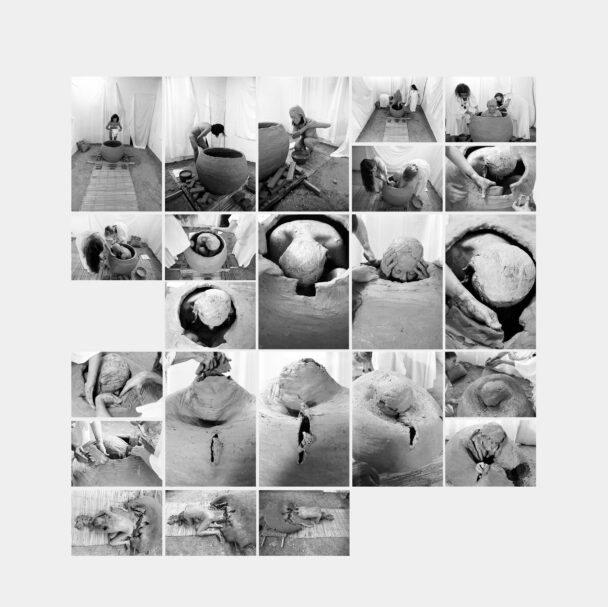
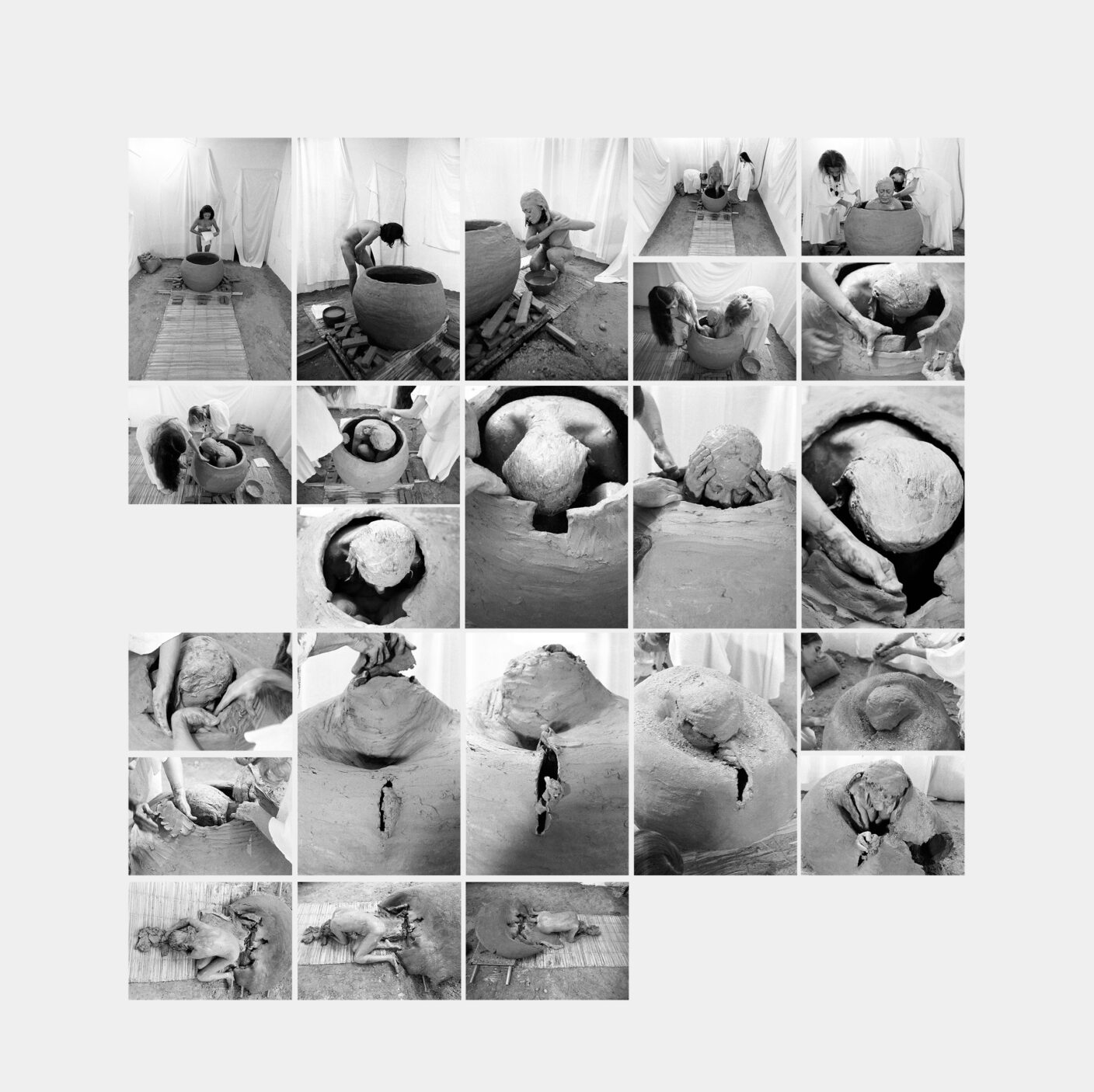
Passagem
1979
Impressão sobre
papel fotográfico
Conjunto de 23 imagens + poema
23,5 x 35 cm [horizontais]
35 x 23, 5 [verticais]
—
©Henri Stahl
©Celeida Tostes
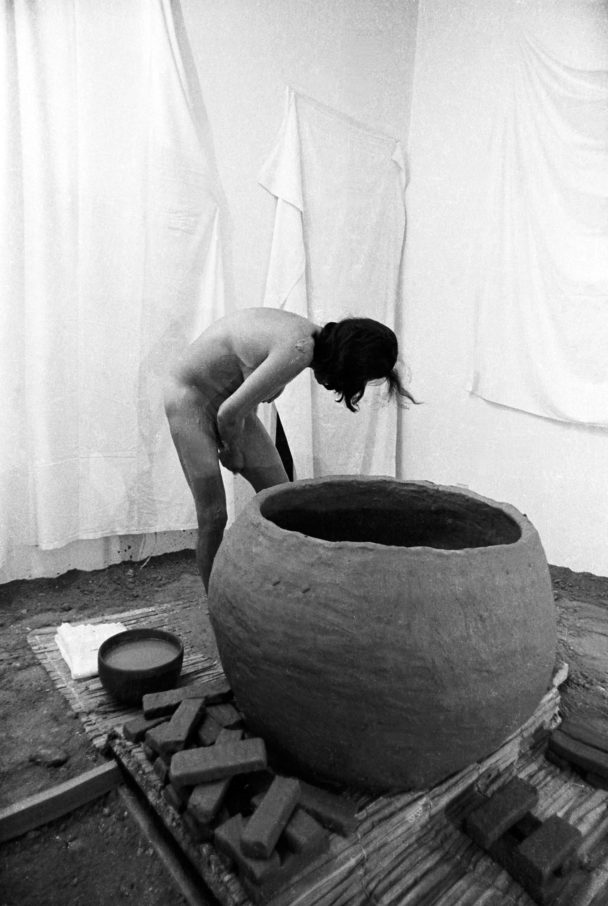
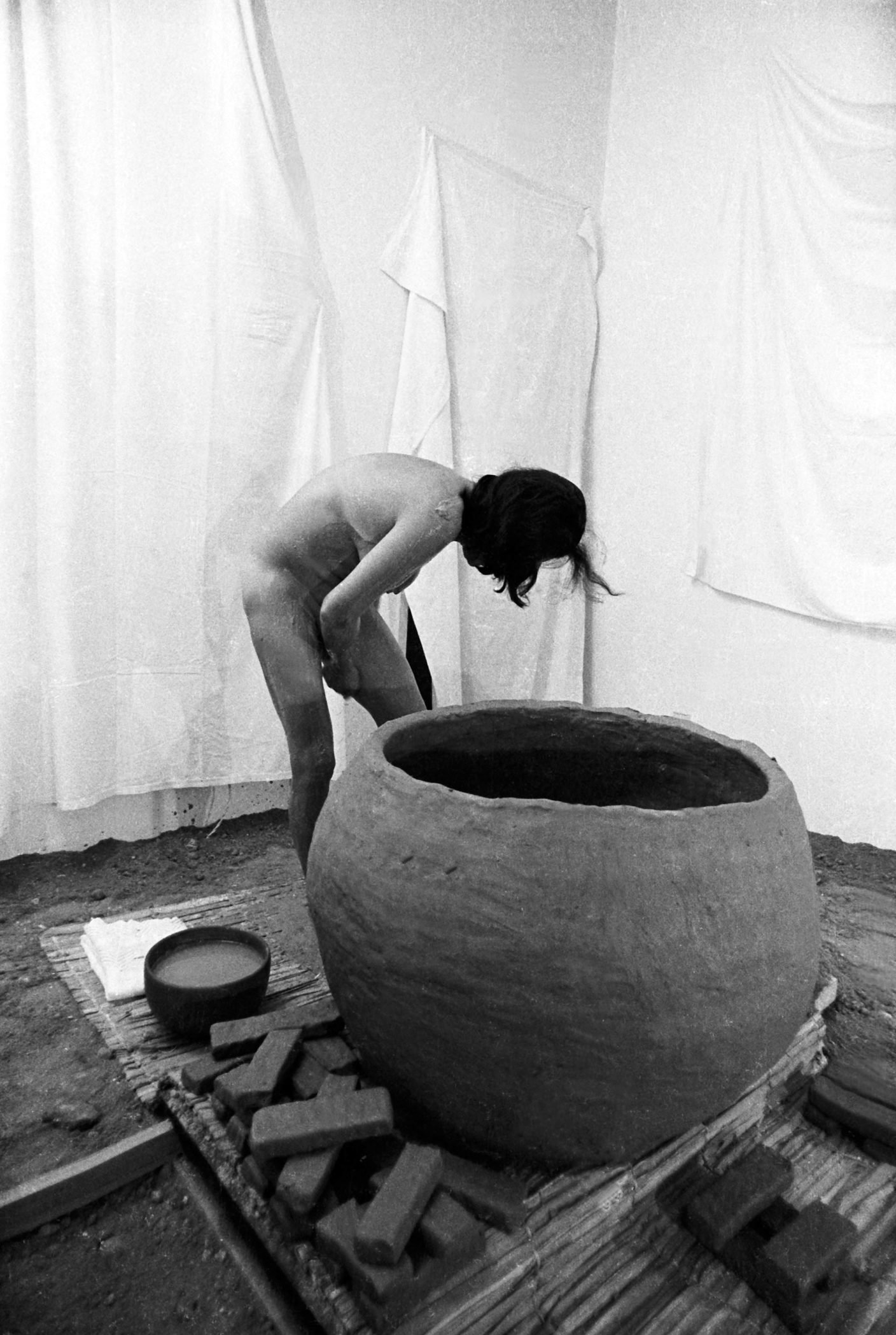
Passagem
1979/2021
Printing
on photographic paper
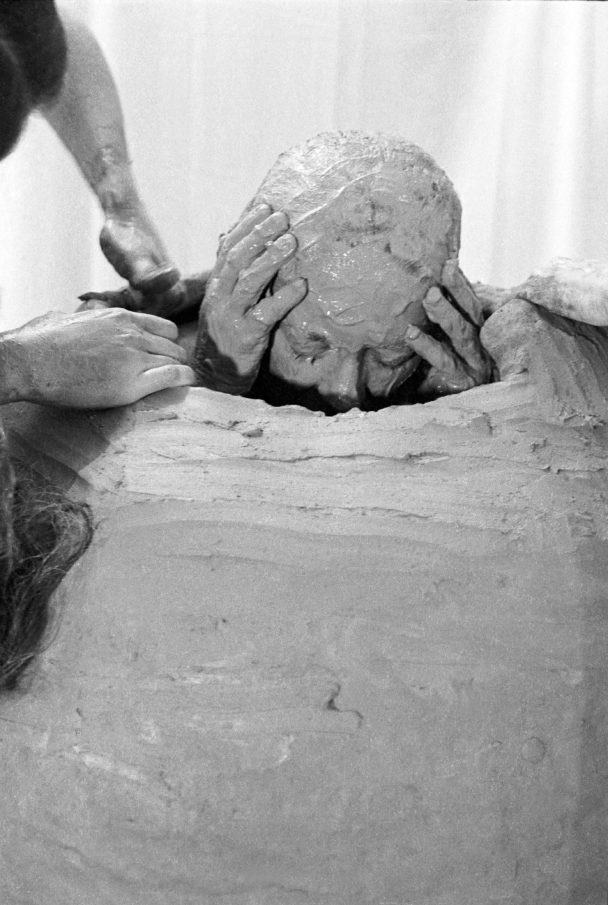

Passagem
1979/2021
Printing
on photographic paper

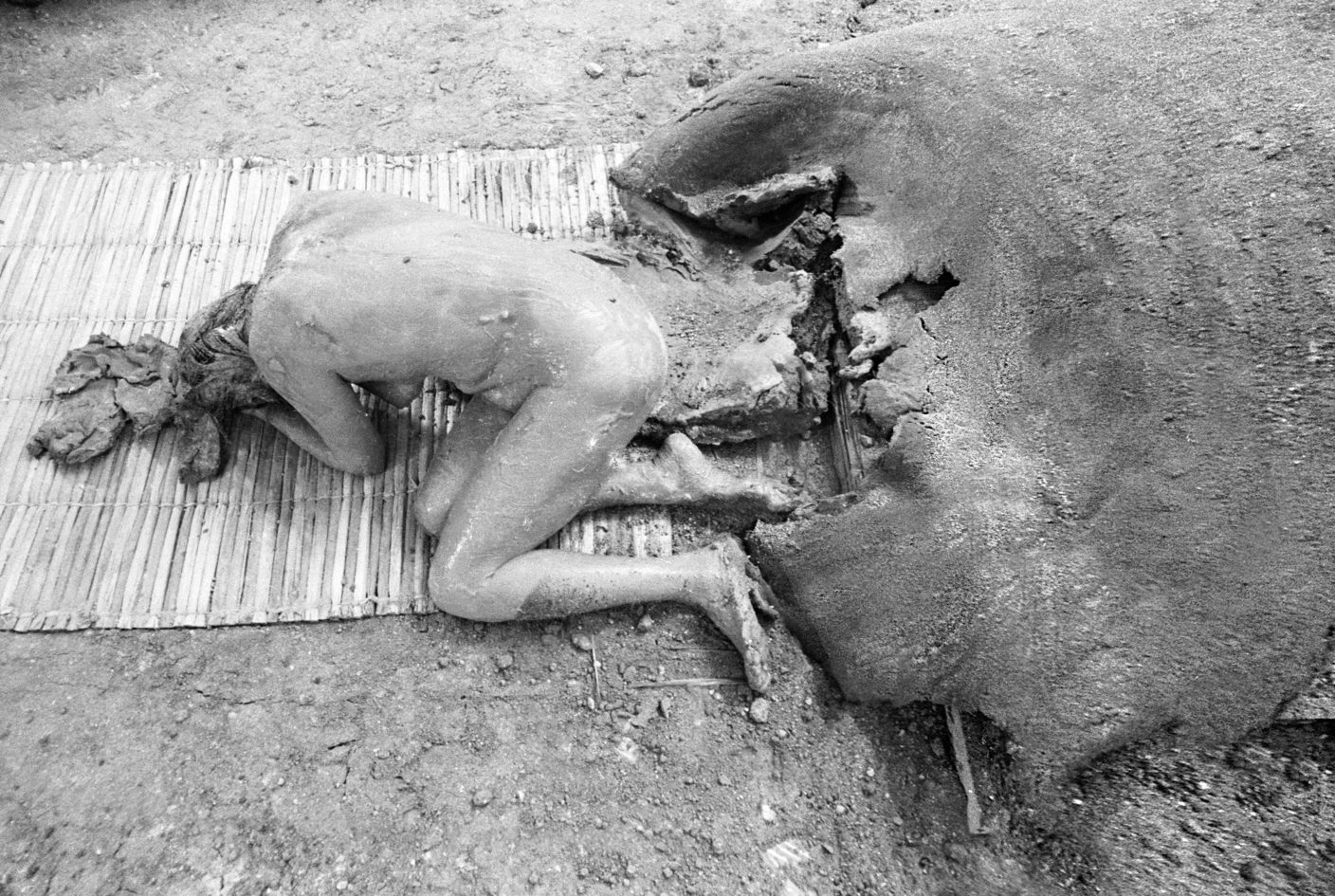
Passagem
1979/2021
Printing
on photographic paper
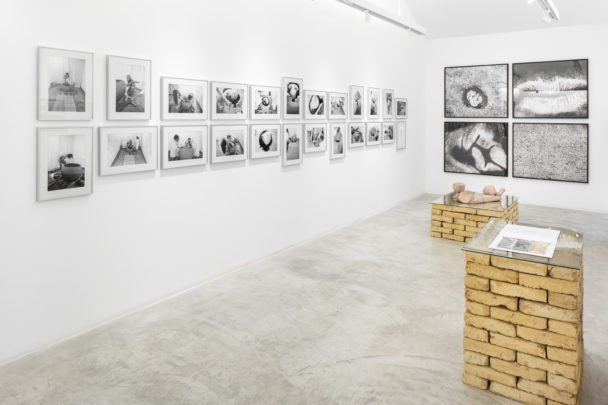
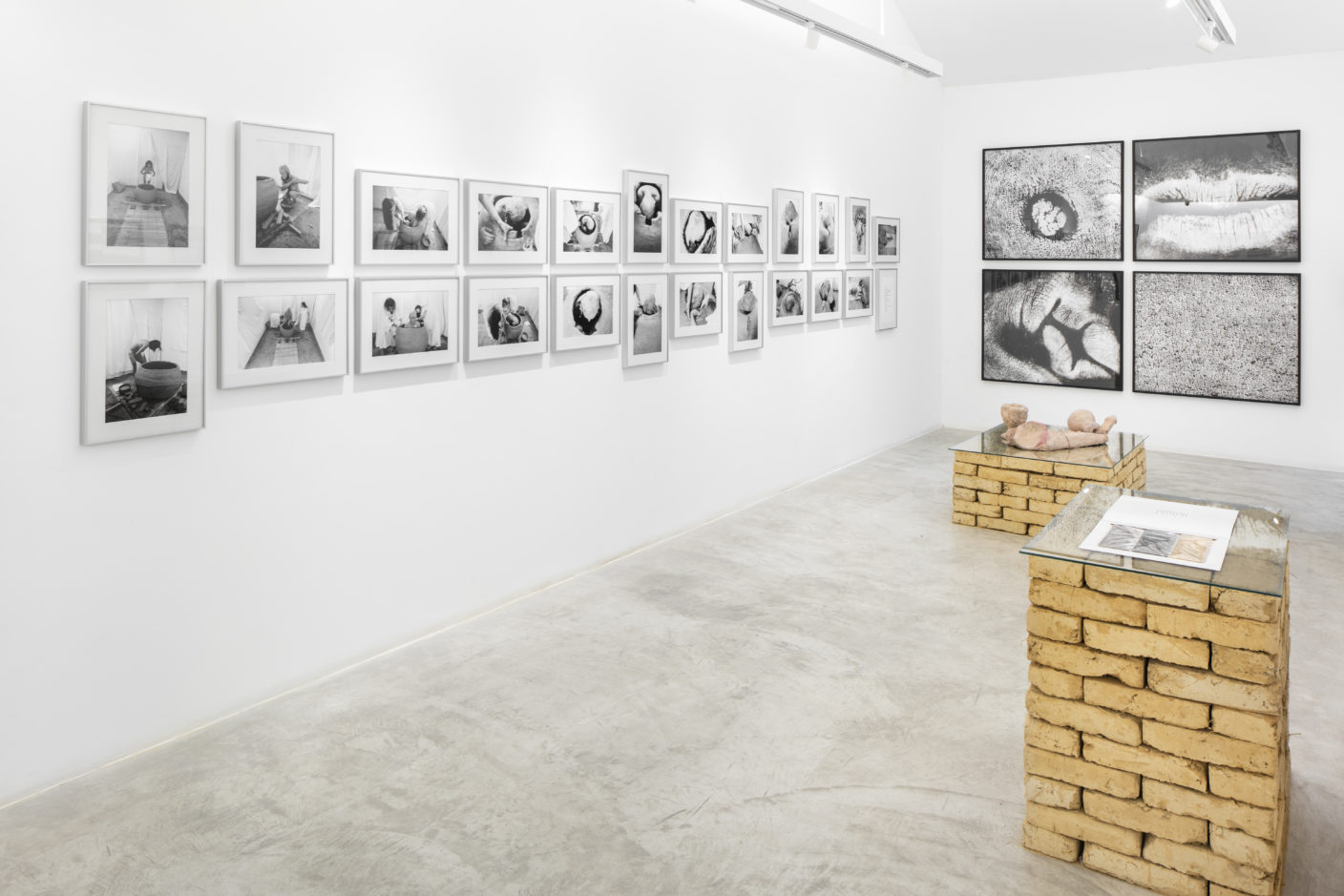
View of the exhibition Ventre da Terra, at Galeria Superfície in São Paulo, 2020.
In Passagem (1979), with the help of two assistants, the artist covered her body with liquid clay and submerged it in a large clay vase built in her apartment in Botafogo, Rio de Janeiro. The assistants covered the vase with more clay until it was sealed of, keeping Celeida sealed in, as if inside an egg. After some time, the artist broke the structure with force and projected her body out, which resulted in a work between sculpture, performance and photography.
—
Text written by Pollyana Quintella on the occasion of the exhibition


Sem Título
Ceramics and dry grass
[nest: 10 × 15 ø cm | o: 5,5 × 4,4 ø cm, 3,5 × 3 ø cm, 3,1 × 2,8 ø cm
—
Photo: Leonardo Ramadinha


Sem título
from the series Nests, N/D
Ceramics, straw and cardboard
8,3 × 18,3 cm
—
Photo: Leonardo Ramadinha
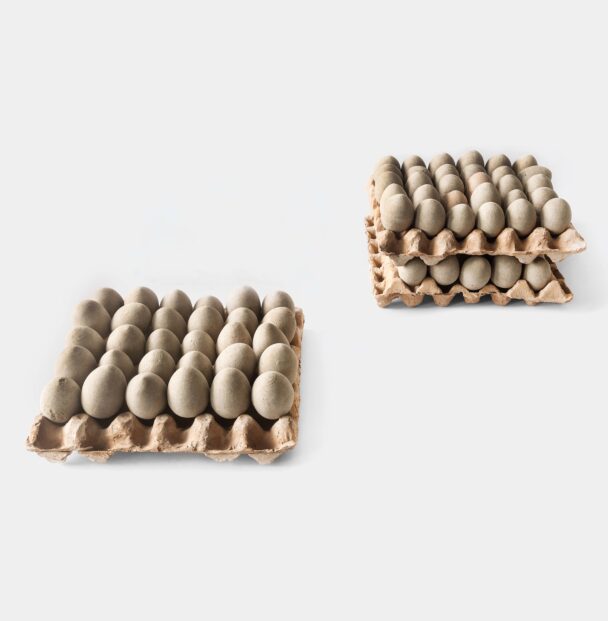
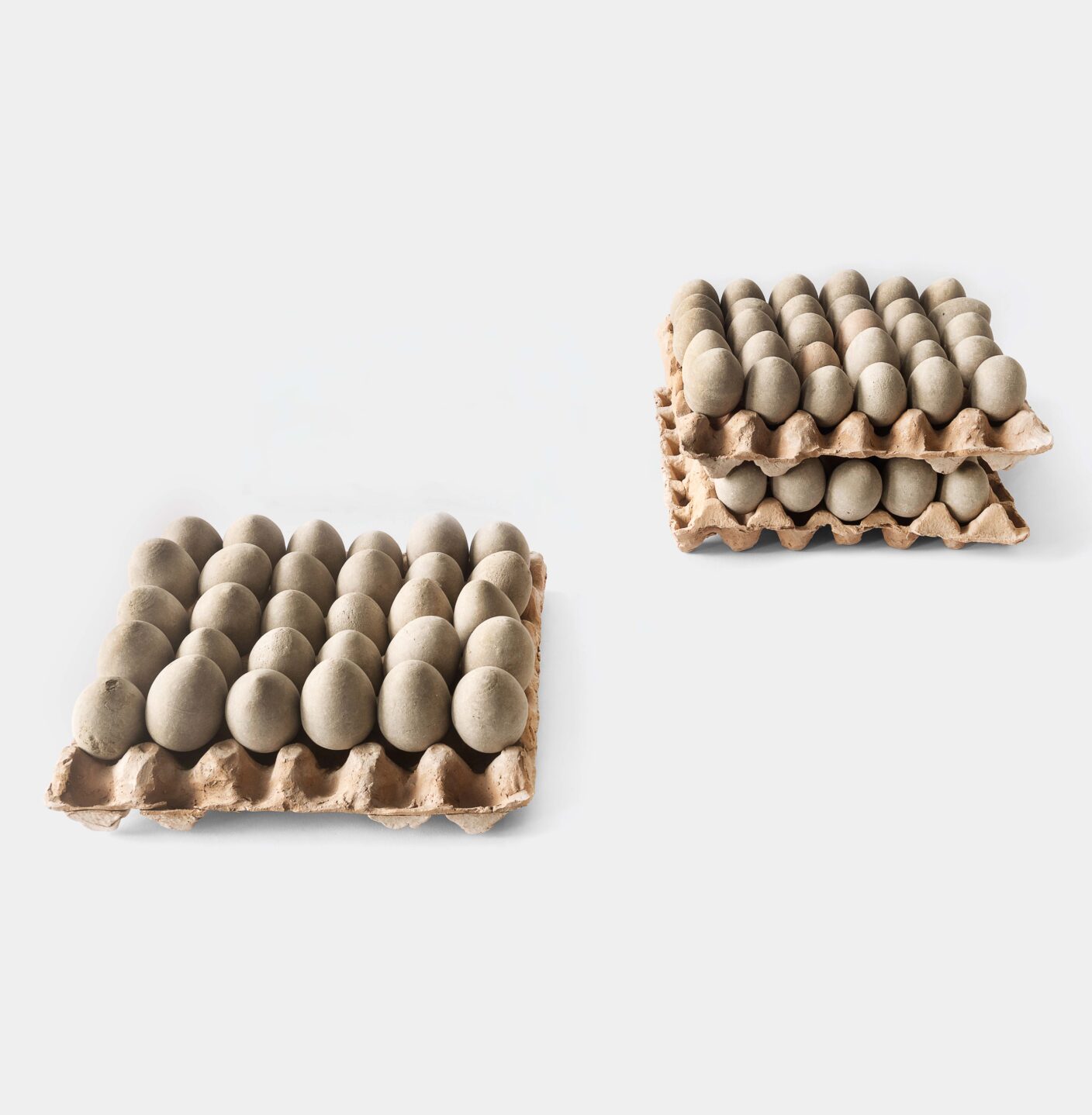
Sem Título
Da série Ovos, S/D
Cerâmica
30 x 30 x 8 cm
—
Crédito fotográfico: Vicente de Mello
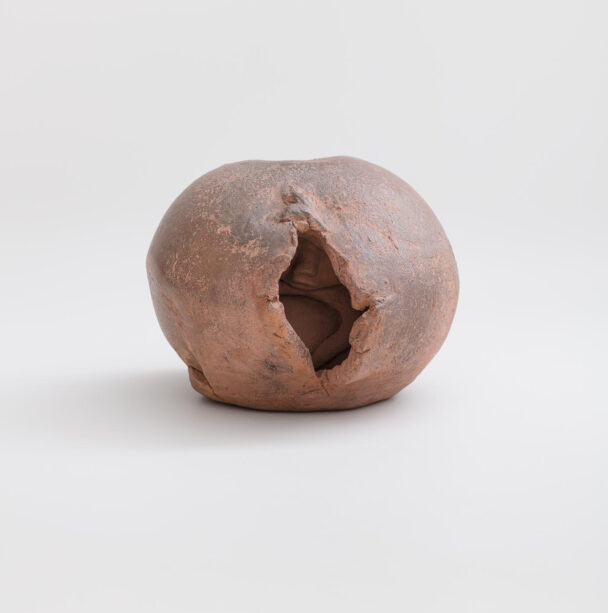
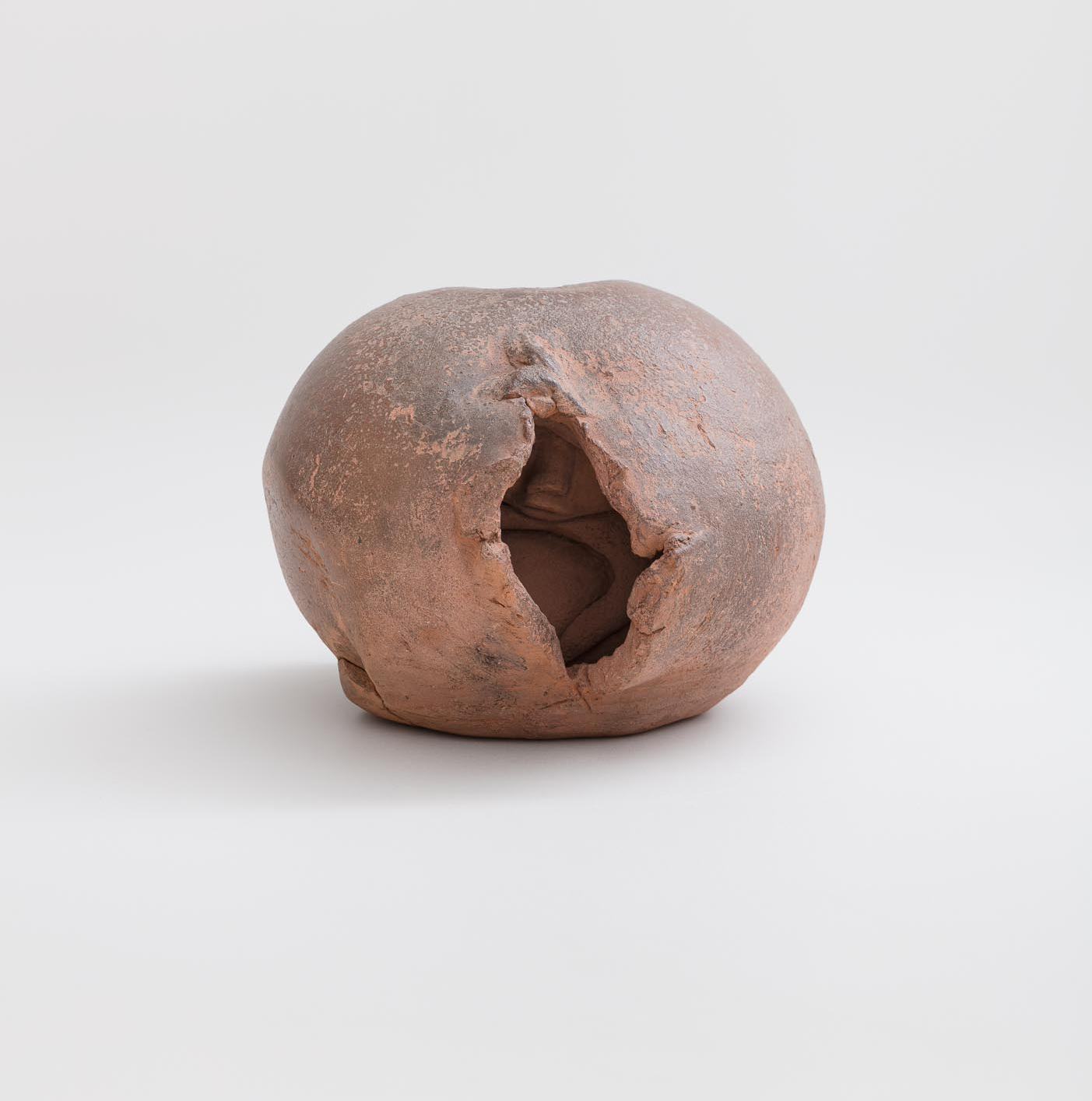
Sem Título
Da série Fendas, Déc. 1970
Cerâmica
22 x 22 cm
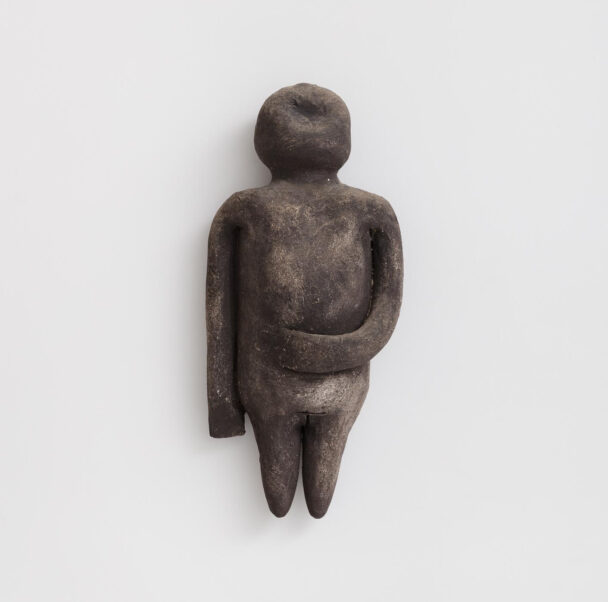

Vênus
Déc. 1980
Cerâmica
25 x 11 x 7 cm
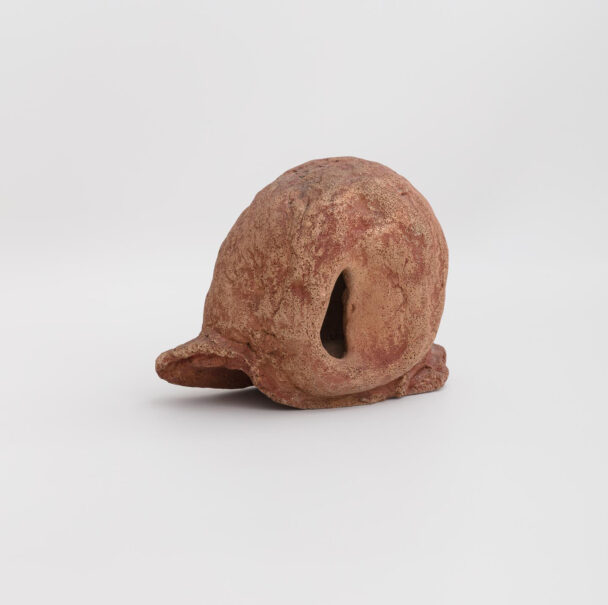

João de Barro
S/D
Cerâmica
20 x 23 x 17 cm
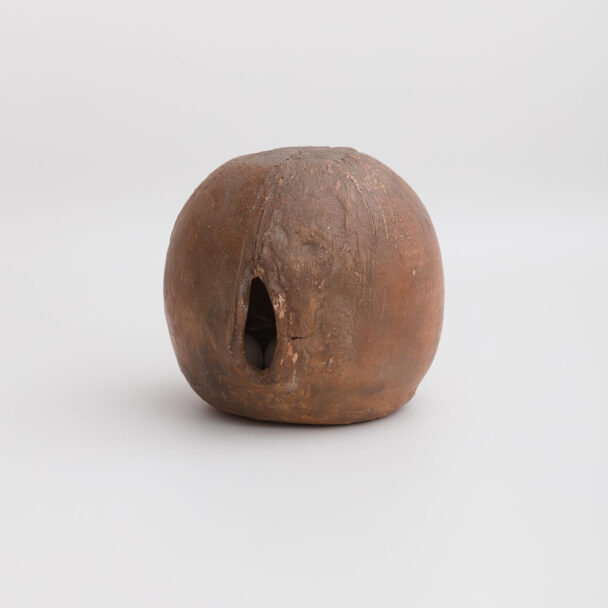
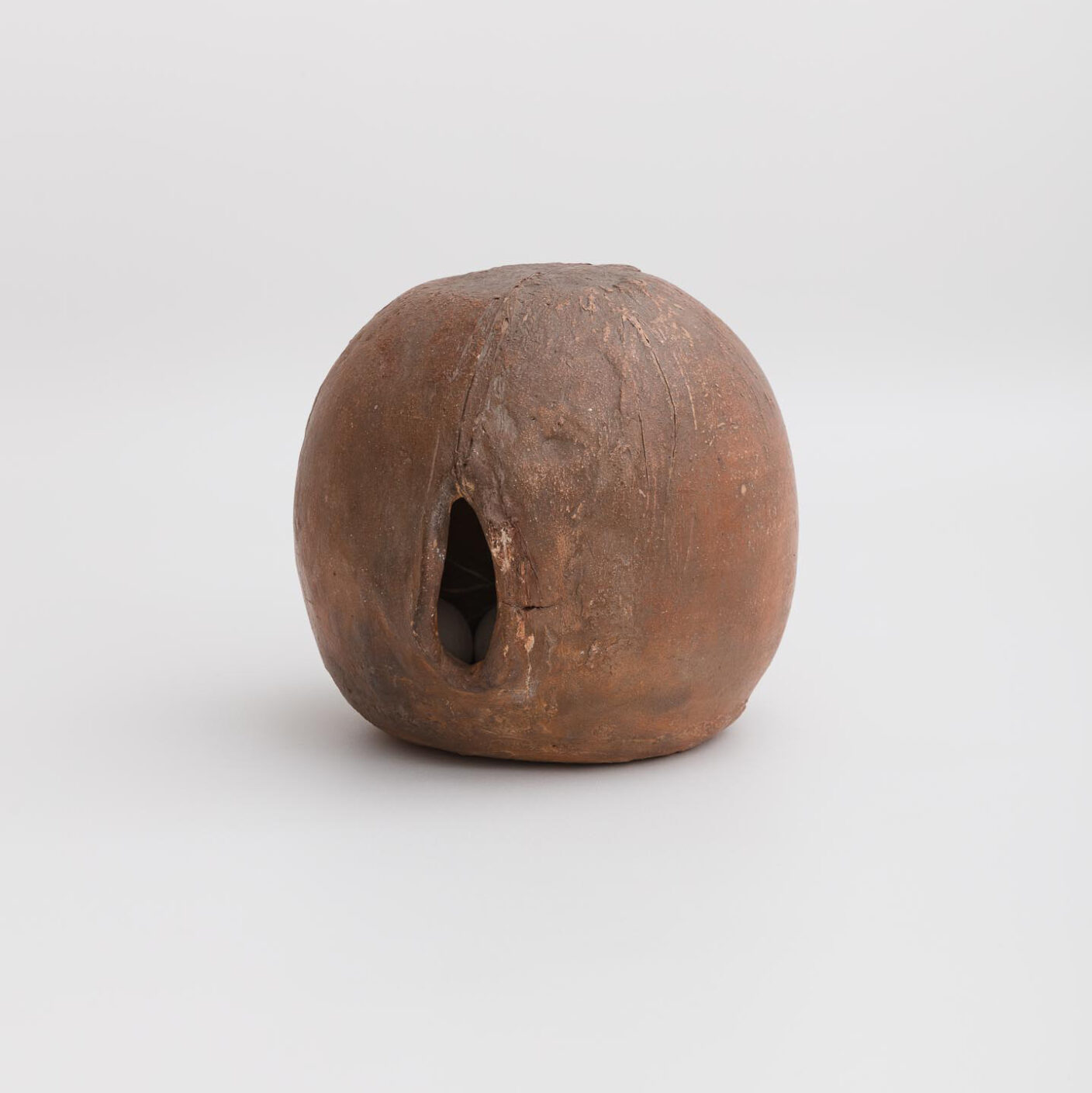
João de Barro
S/D
Cerâmica
19 x 19 x 19 cm
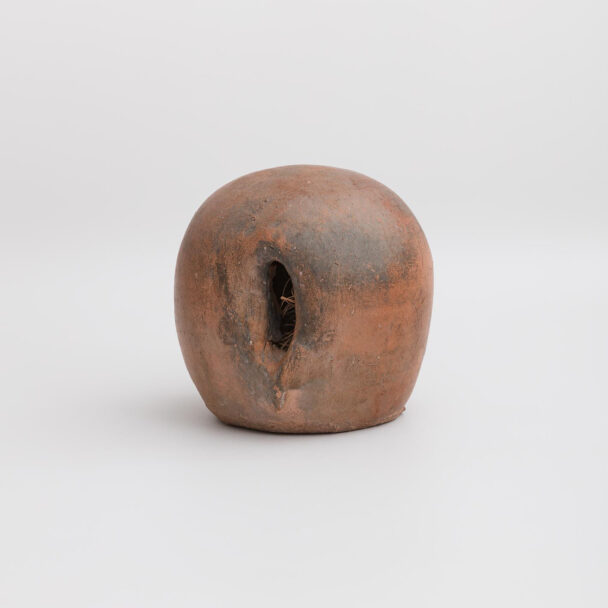

João de Barro
S/D
Cerâmica
20 x 20 x 20 cm
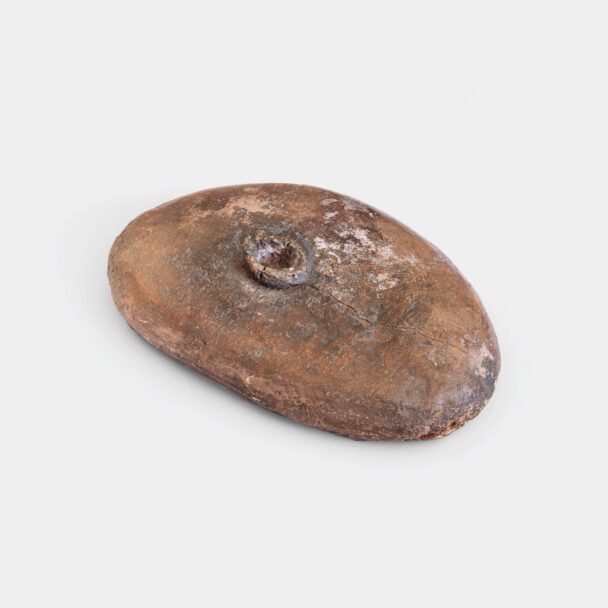
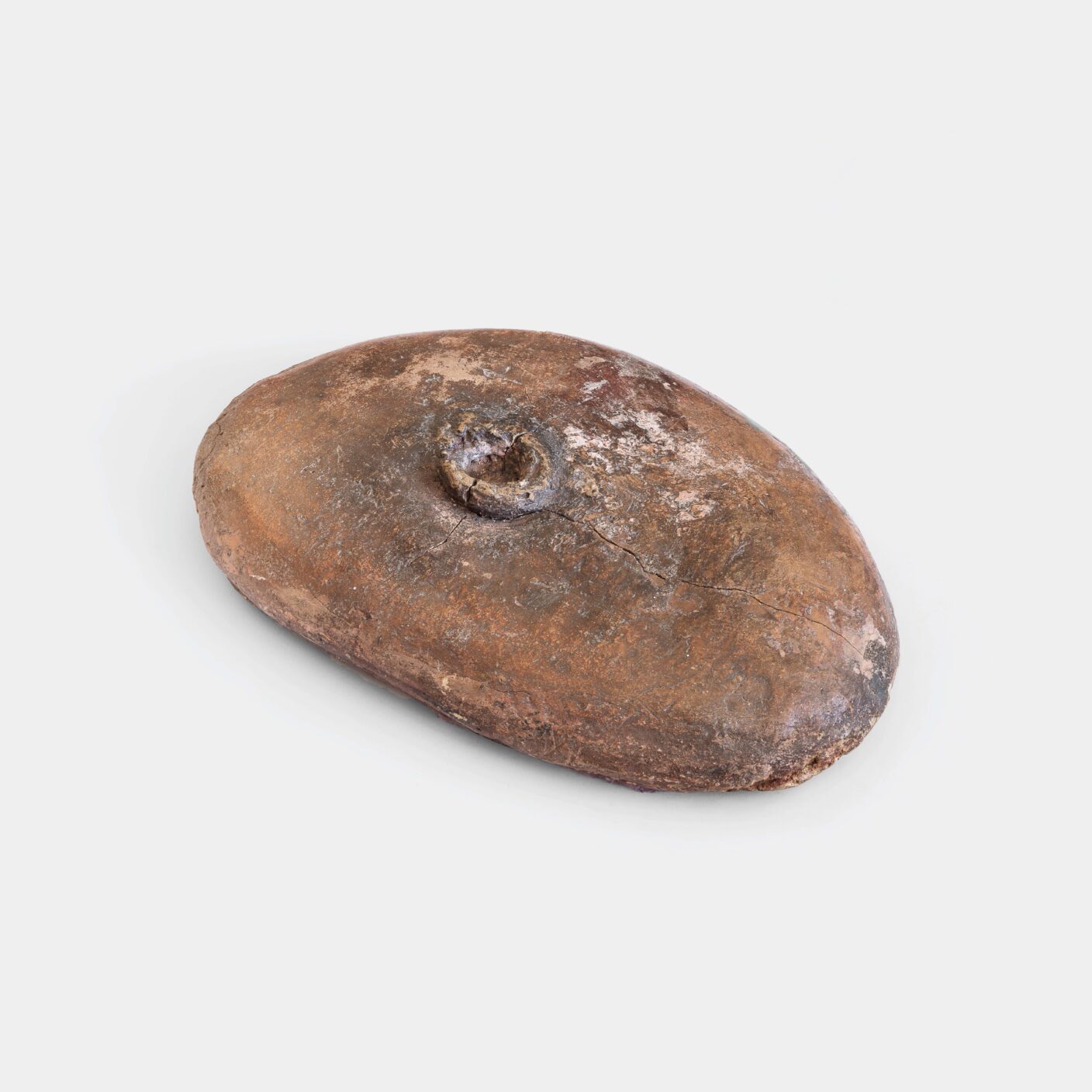
Vênus Ancestral
Da série Ferramentas, 1979
Argila
47 x 32 x 9 cm
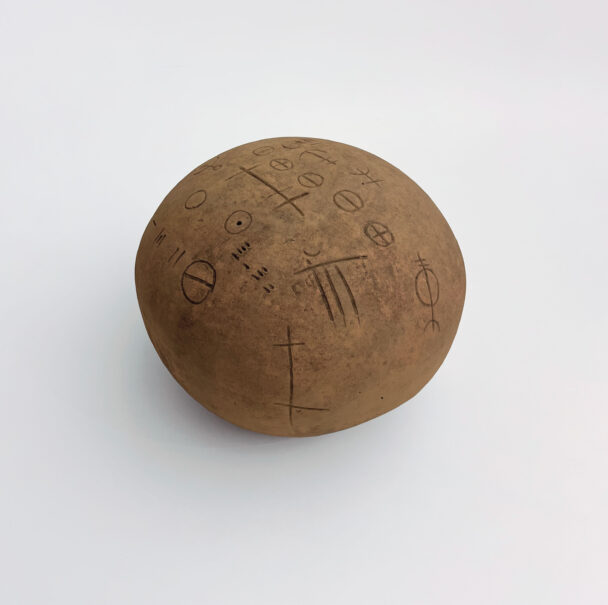
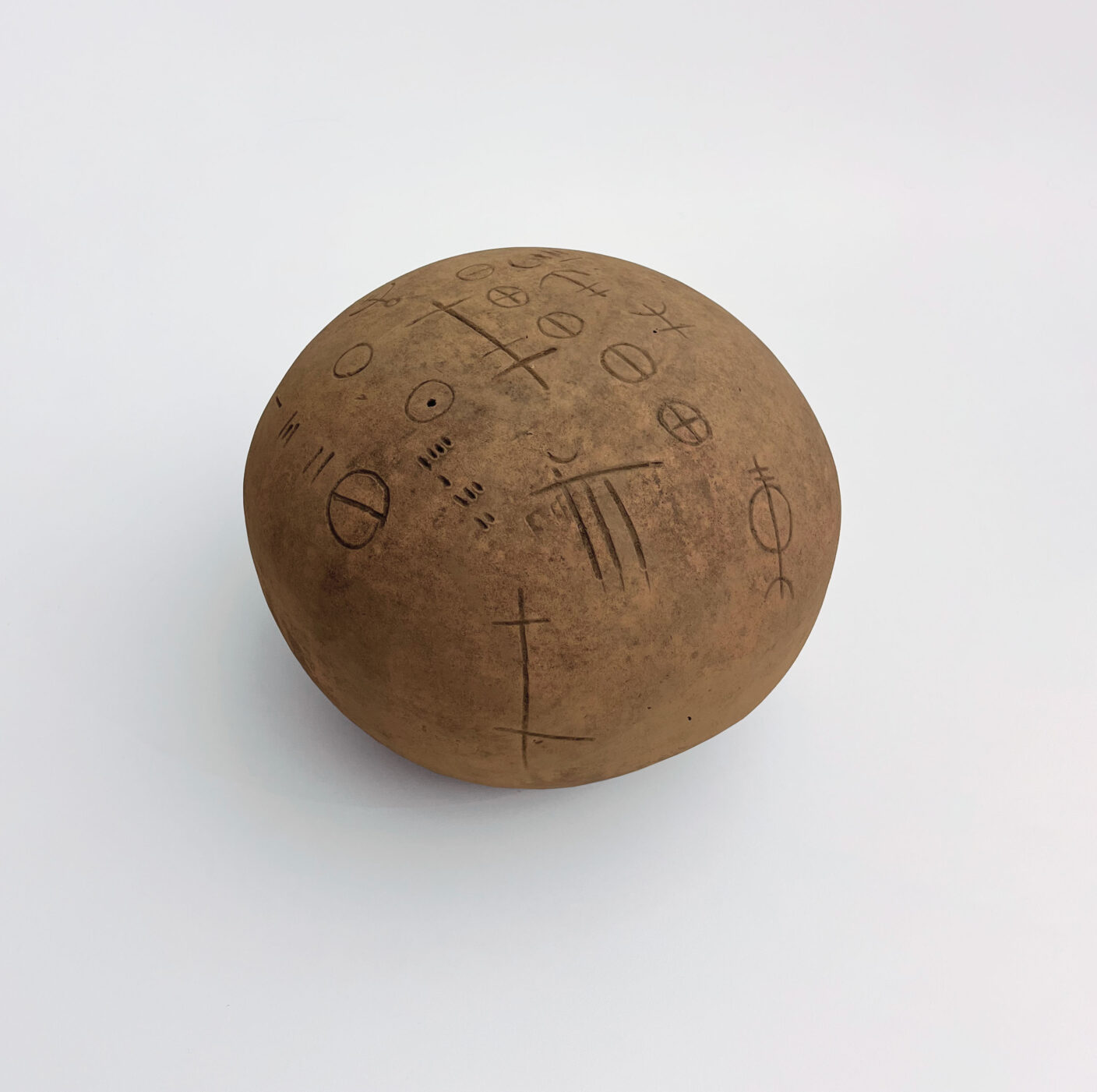
Sem Título
Déc. 1970
Cerâmica e ferro
25 x 28 x 28 cm


Sem Título
Déc. 1970
Cerâmica e ferro
12 peças medindo
entre Ø 19 e Ø 31 cm [cada]
—
Crédito fotográfico: Henri Stahl
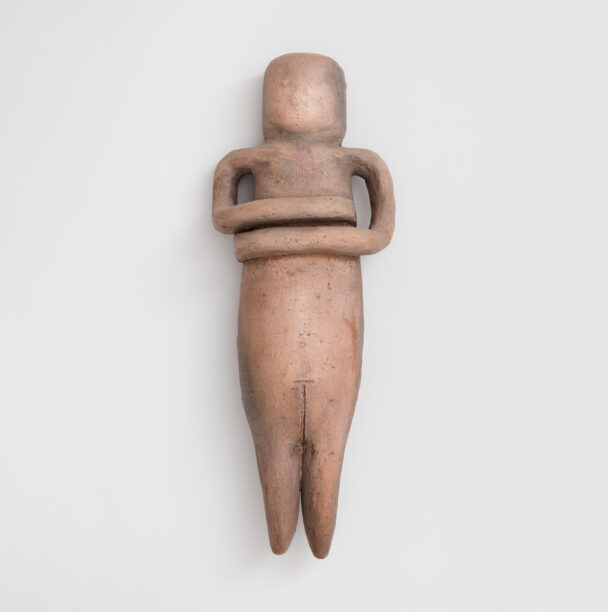
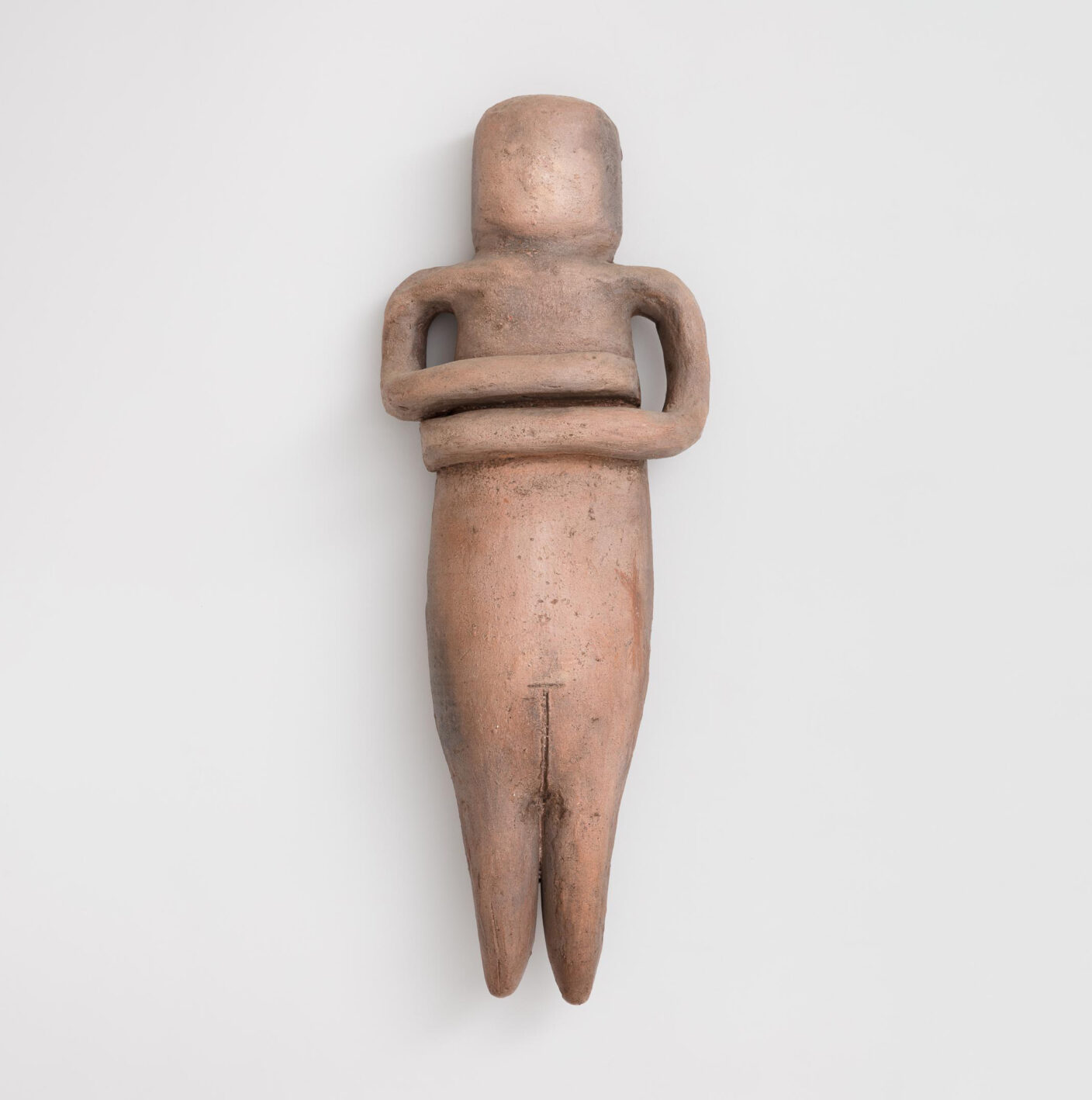
Vênus
Déc. 1980
Cerâmica
46,6 x 15,5 x 11 cm
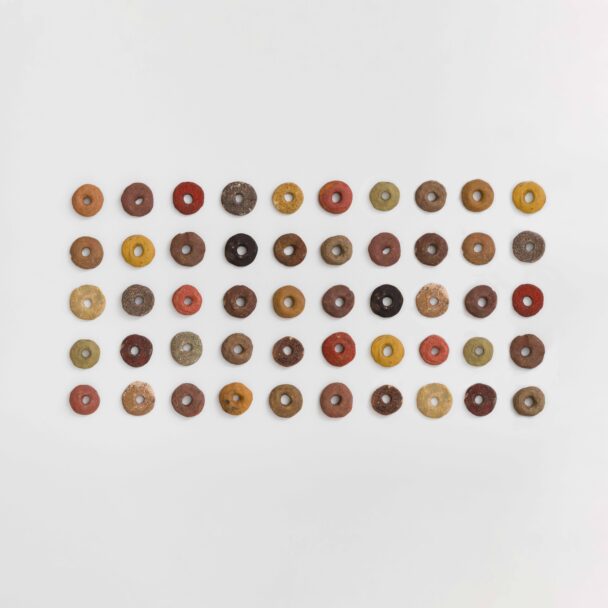

Sem Título
Da série Rodas, 1983
Solo-cimento
50 discos
Ø 5 cm [cada]

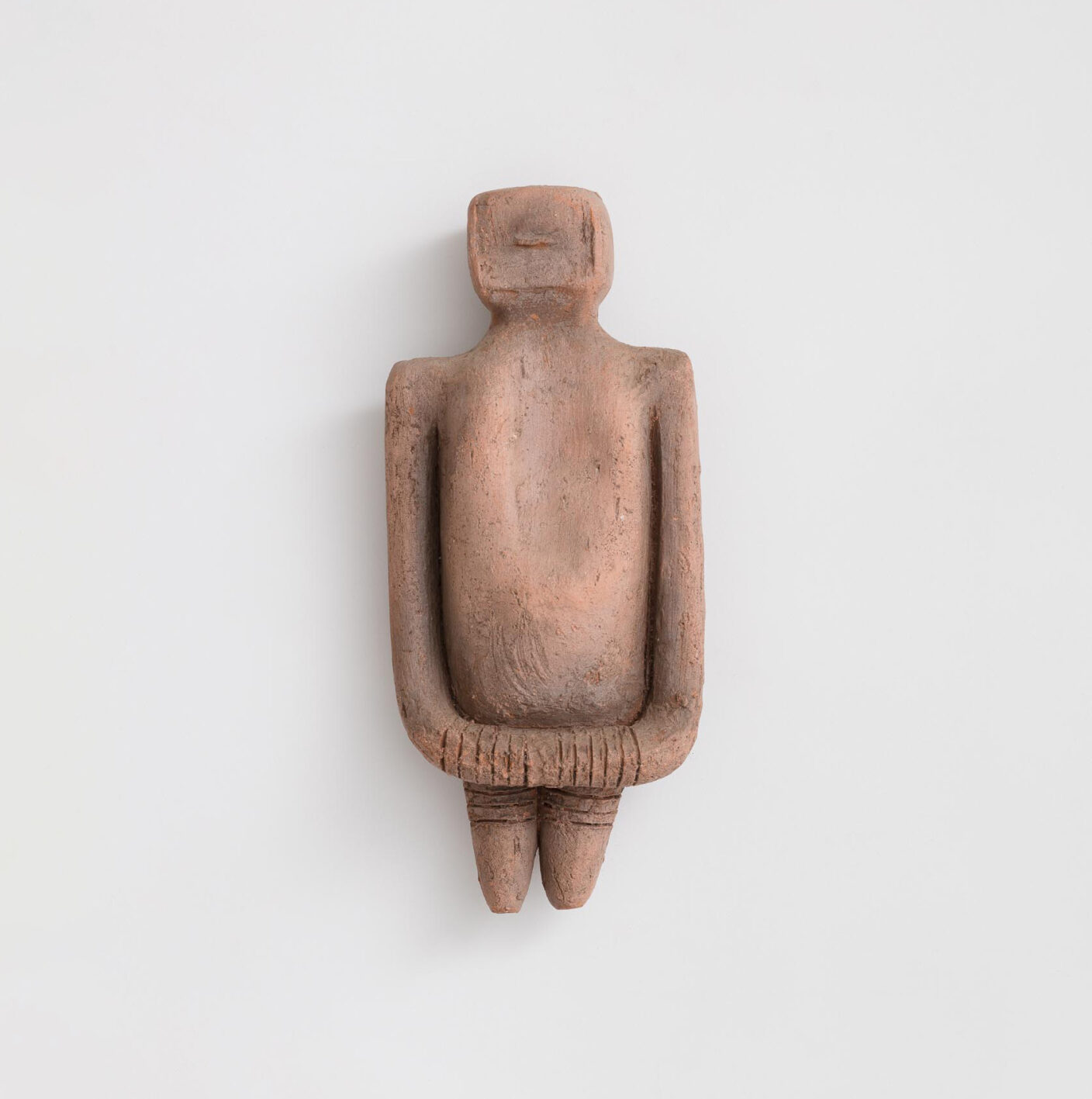
Guardião
Déc. 1980
Cerâmica
36 x 15 x 9,5 cm
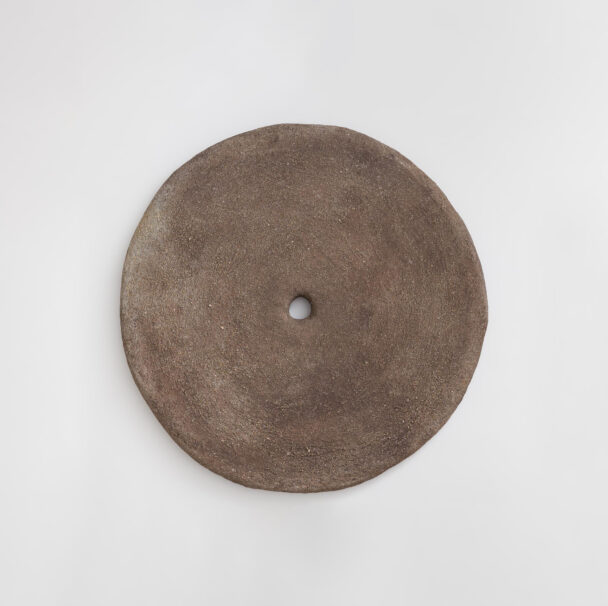
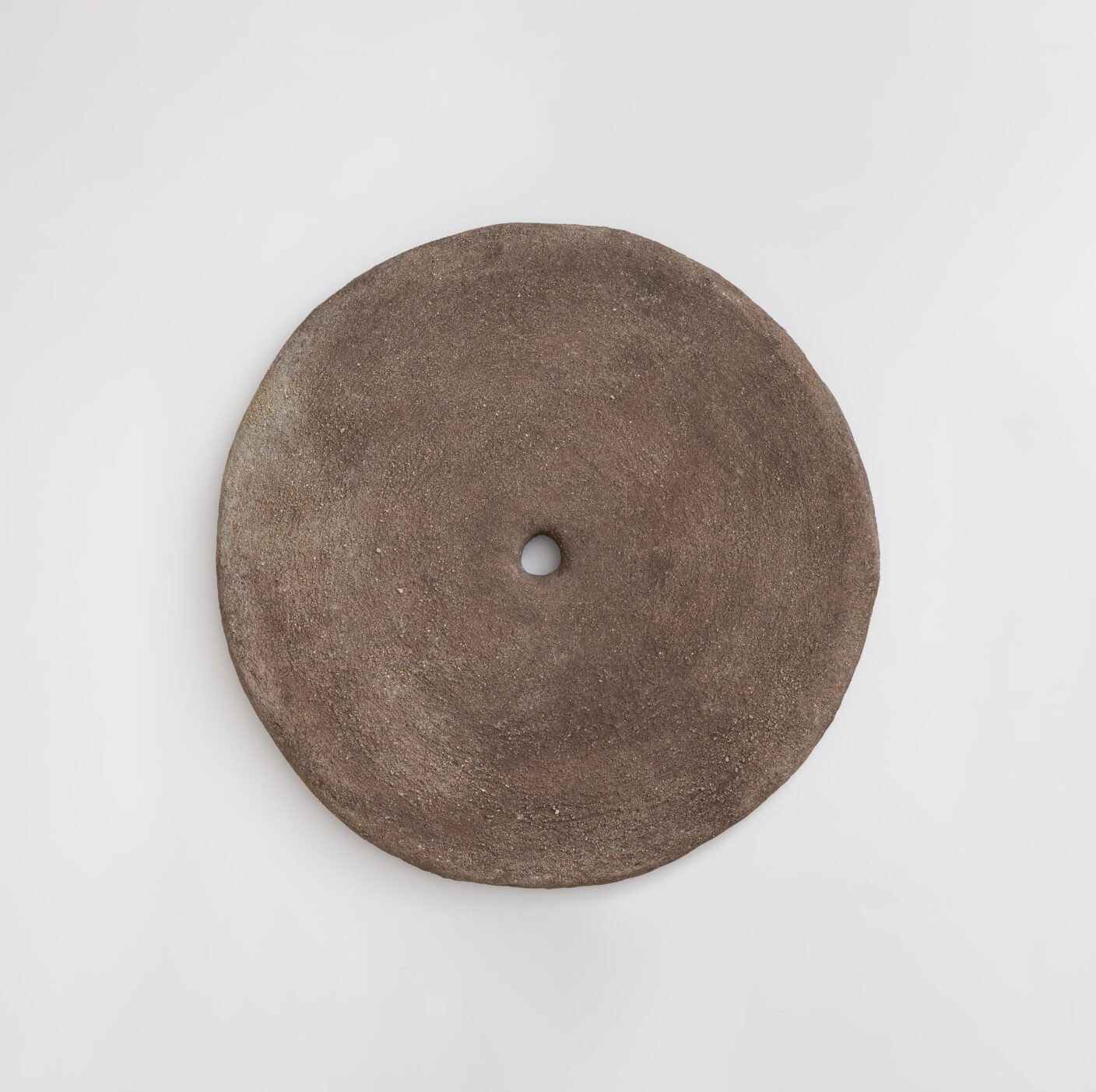
Mó
Déc. 1980
Argila
Ø 90 cm
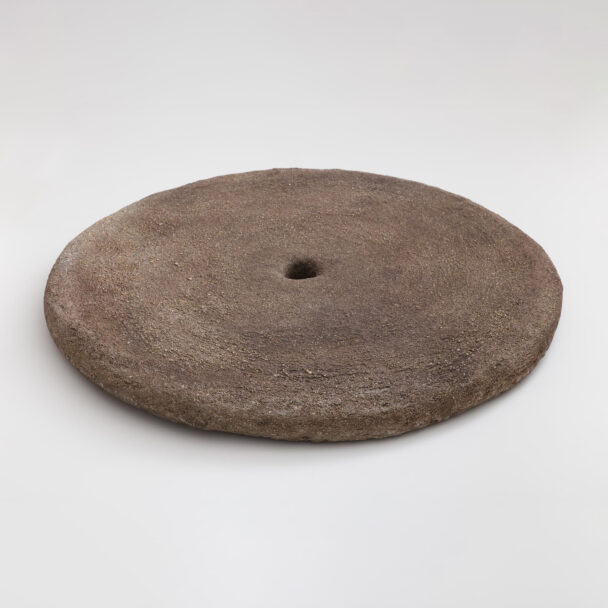
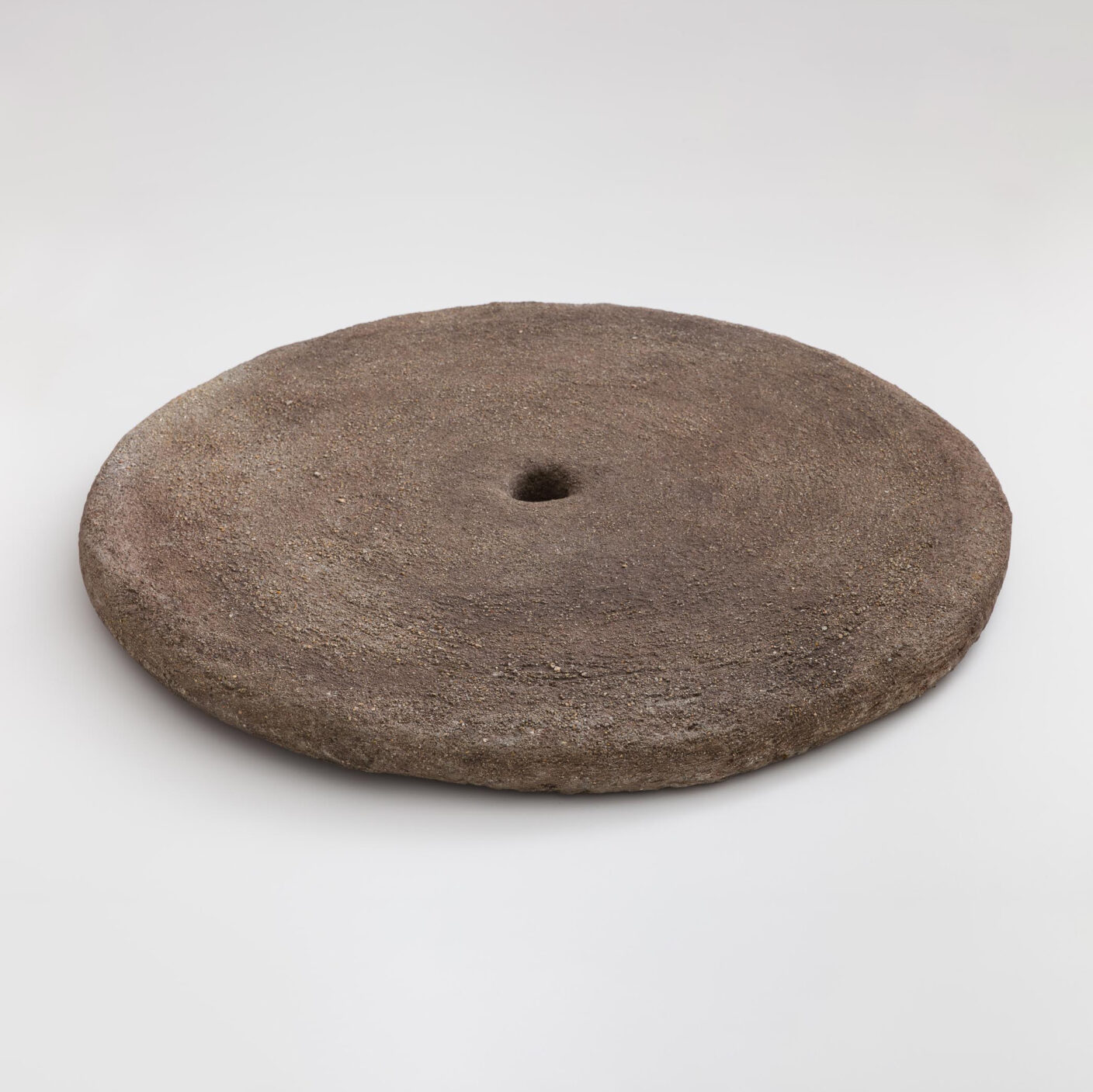
Mó
Déc. 1980
Argila
Ø 90 cm
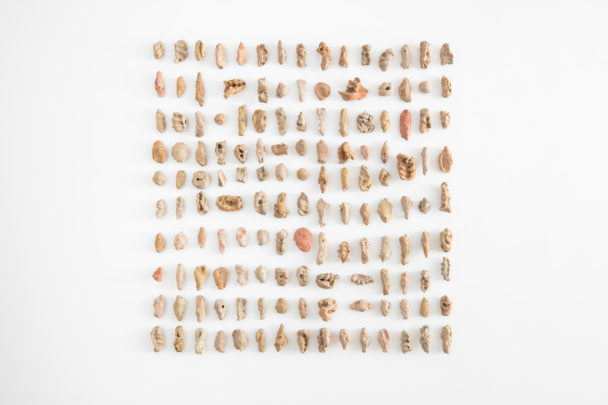

Amassadinhos
Clay
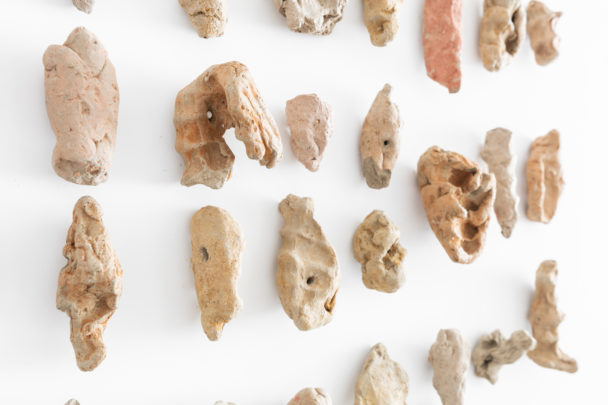
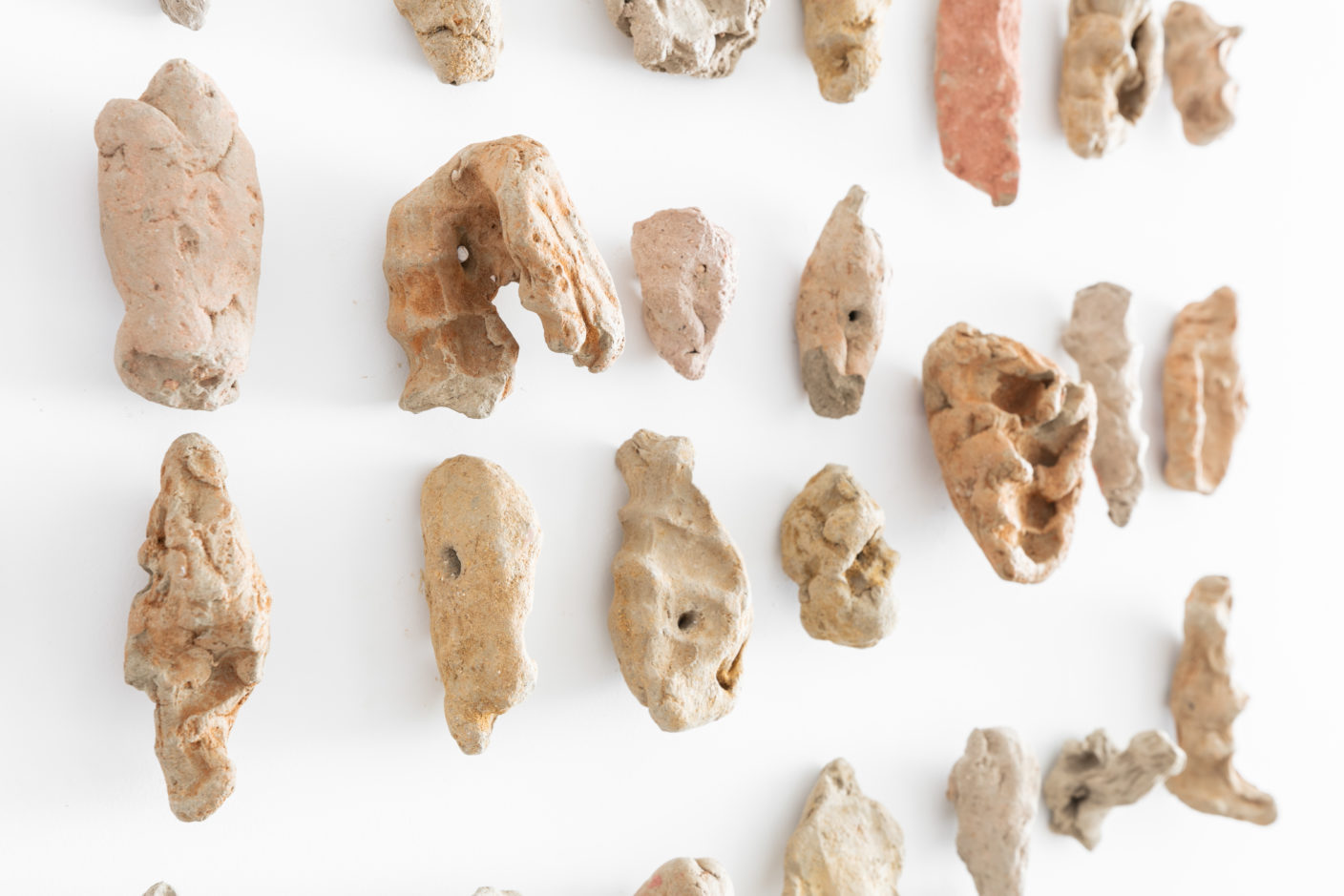
Detail of the Amassadinhos, on the exhibition Ventre da Terra, at Superfície, 2020.
Celeida’s relationship with clay is close and is reflected above all in continuous and insistent gestures. Repeat, repeat, repeat, until the doing overcomes the individual, as in a mantra. Amassadinhos (1991) can also be read as a gesture practiced to exhaustion. What the artist pursues is archaic, original work.
—
Text written by Pollyana Quintella on the occasion of the exhibition
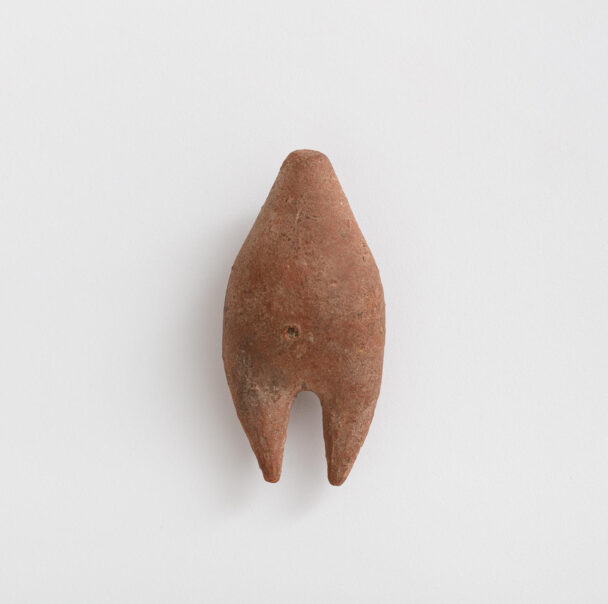

Vênus
Déc. 1970
Cerâmica
12 x 6 x 5 cm
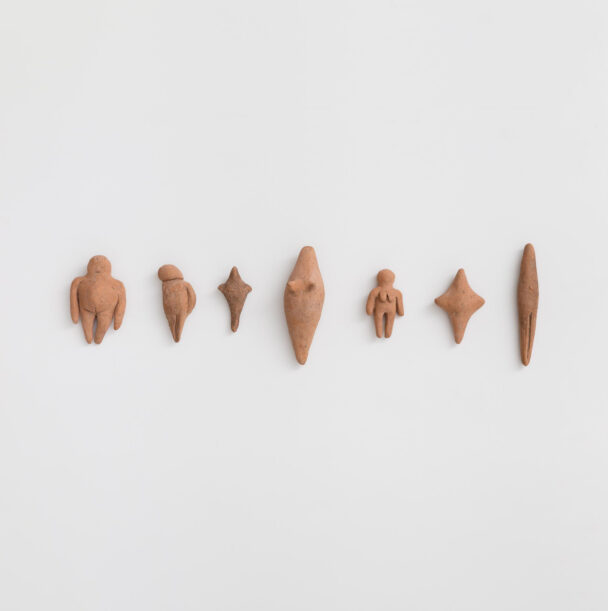
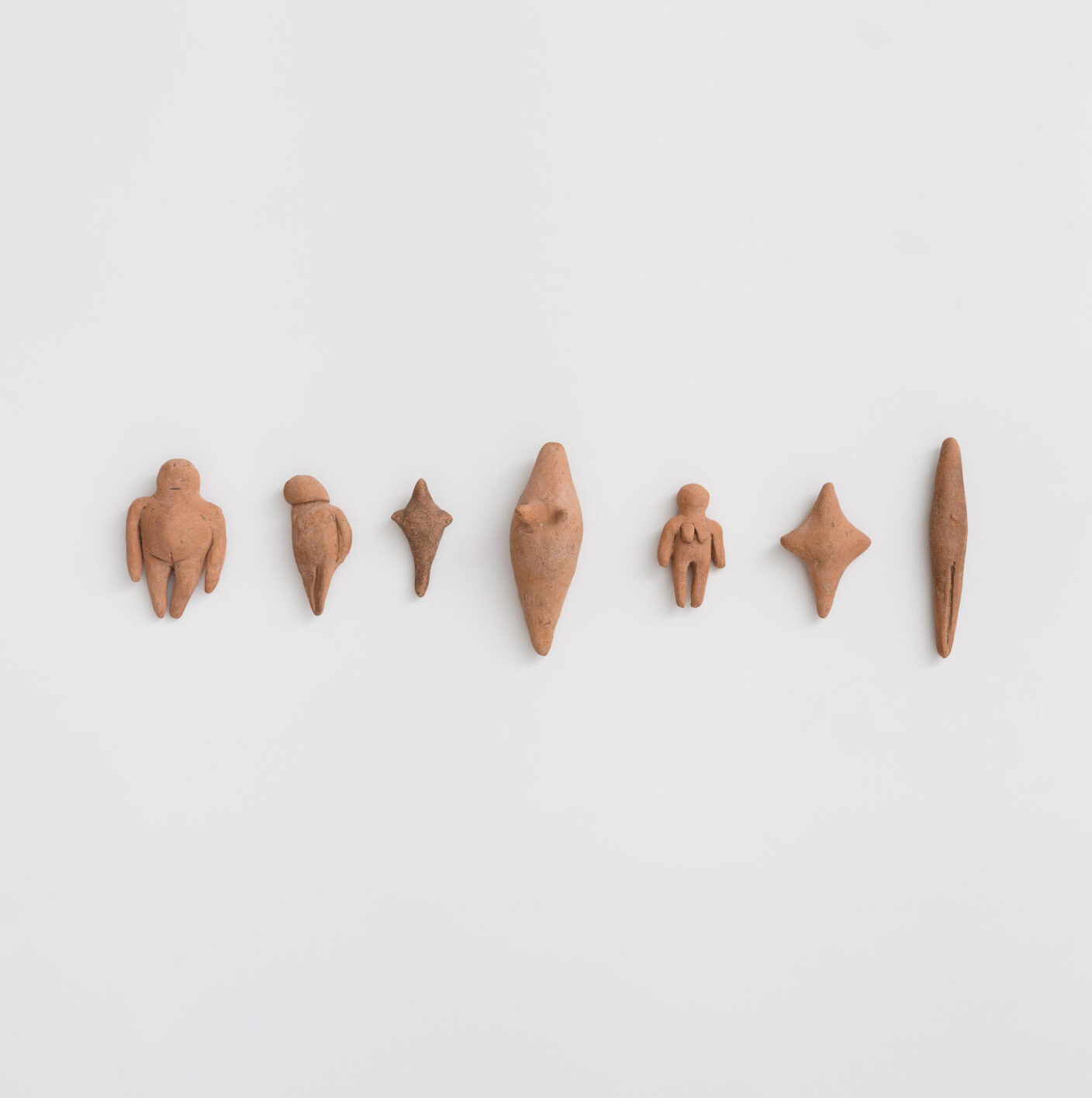
Sem Título
Da série Vênus, Déc. 1970
Cerâmica
7 peças medindo
entre 3 e 14 cm [cada]

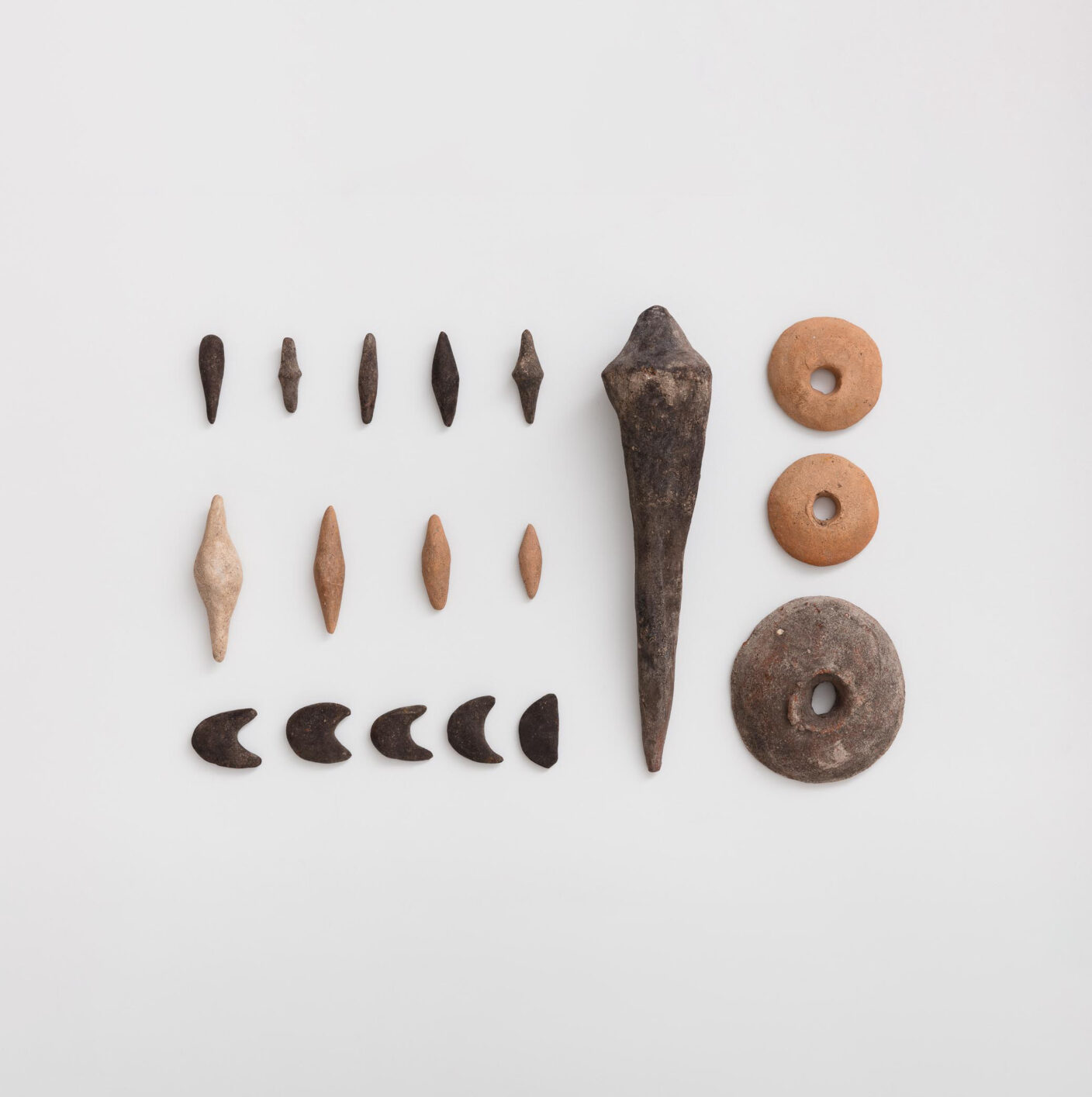
Sem Título
Das série Bastões, Rodas
e Ferramentas, Déc. 1970
Cerâmica
18 peças medindo
entre 3 e 14 cm [cada]
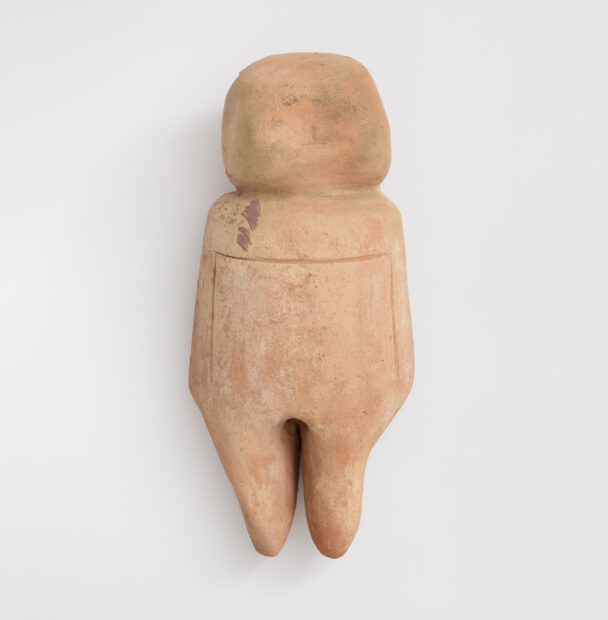

Vênus
Déc. 1980
Cerâmica
42,3 x 16,2 x 11 cm


Vênus
Déc. 1980
Cerâmica
57 x 17 x 11 cm
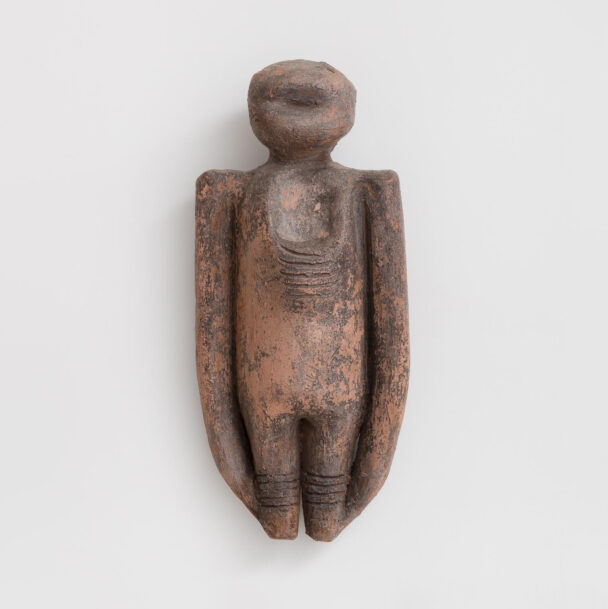

Guardião
Déc. 1980
Cerâmica
37 x 16 x 12 cm


Sem Título
Da série Selos, 1982
Cerâmica
Aprox. 5 cm [cada]
—
Crédito fotográfico: Vicente de Mello


Sem Título
Da série Rodas, 1983
Cerâmica e ferro
Conjunto de 20 peças
Aprox. Ø 50 cm [cada]
—
Crédito fotográfico: Marcia Foletto
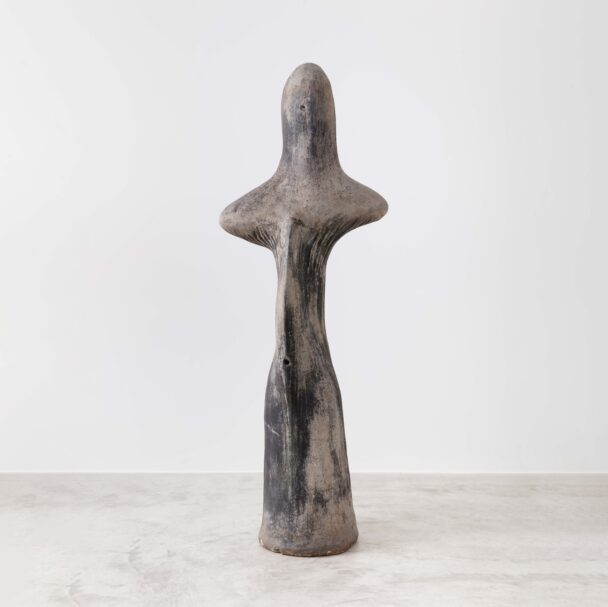
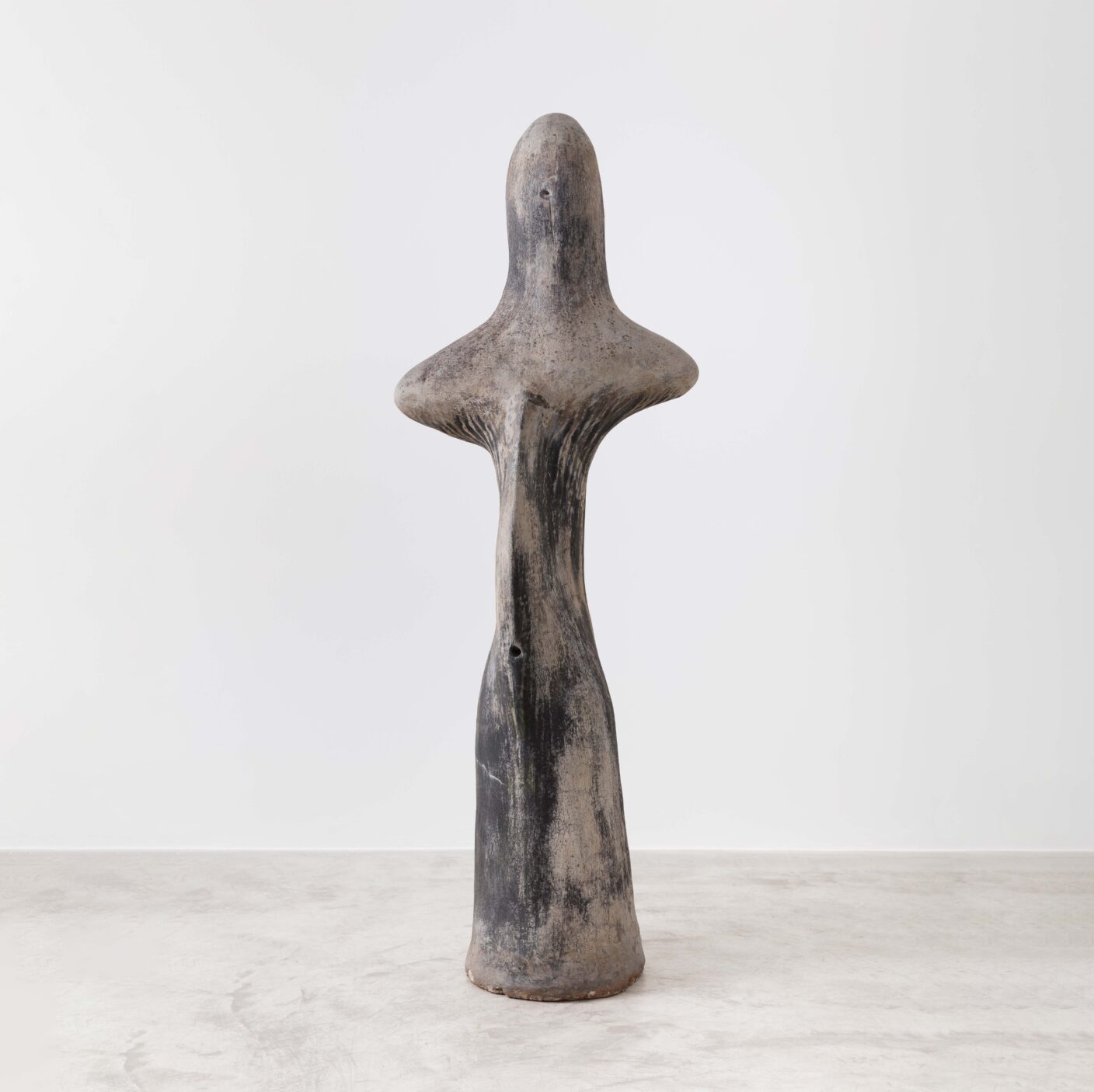
Guardião
Déc. 1980
Solo-cimento
150 x 60 x 40 cm
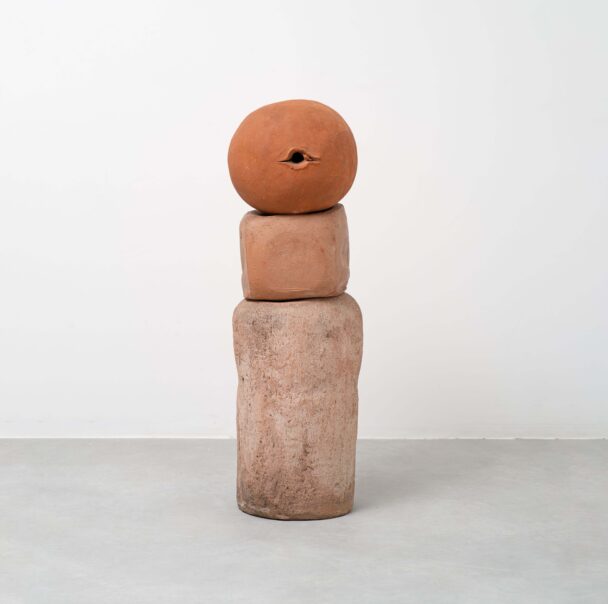
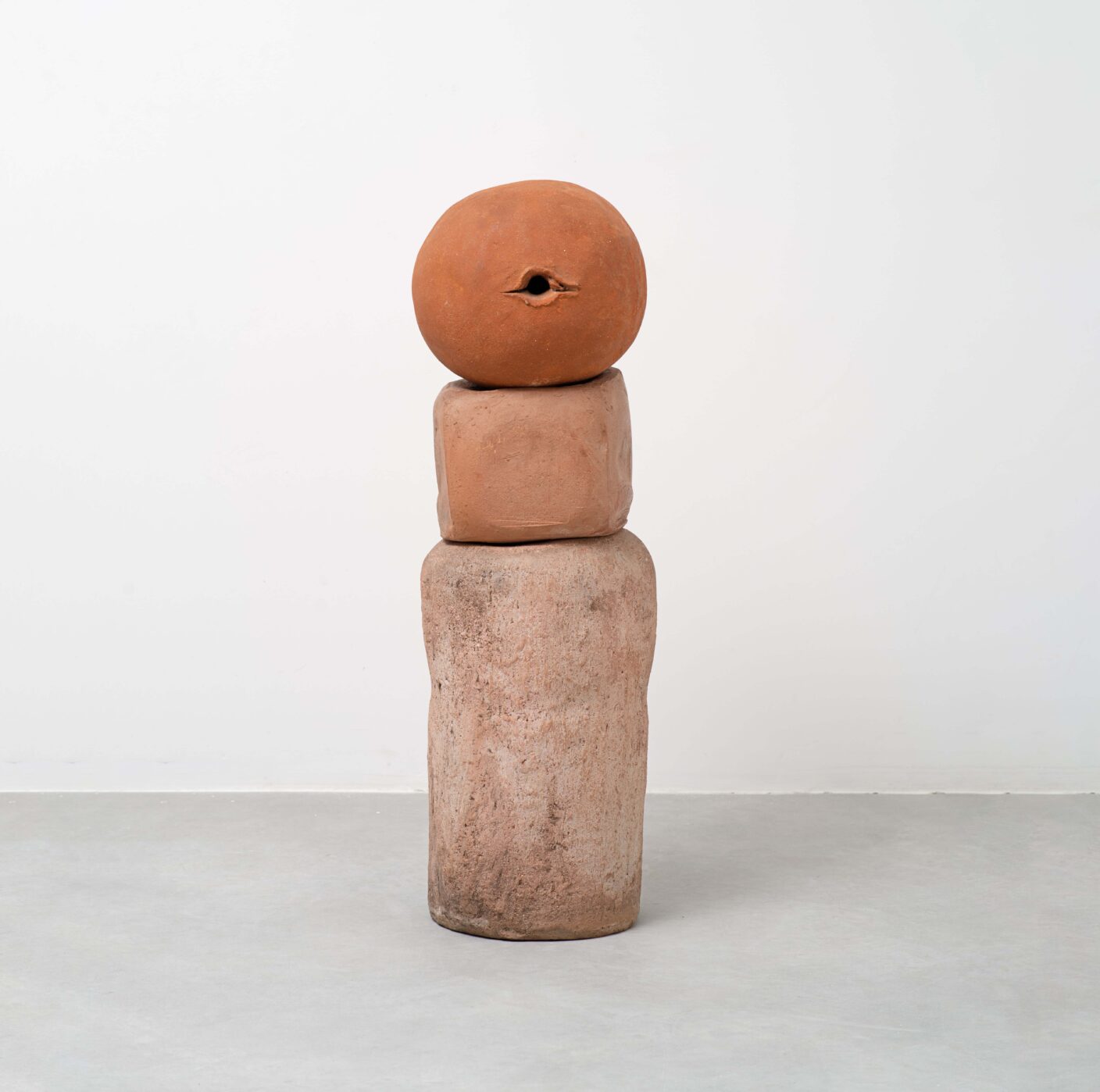
Beijinho
Déc. 1970
Cerâmica
83 x 26 x 25 cm
—
Crédito fotográfico: Edouard Fraipont (Cortesia Gomide&Co)
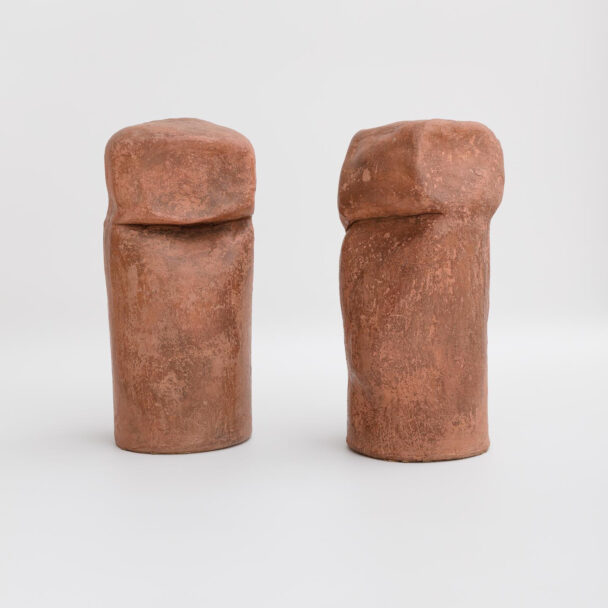

Vênus e Guardião
Déc. 1970
Cerâmica
40 x 20 x 20 cm [cada]


Guardião
S/D
Cerâmica
36 x 16 x 16 cm
—
Crédito fotográfico: Vicente de Mello
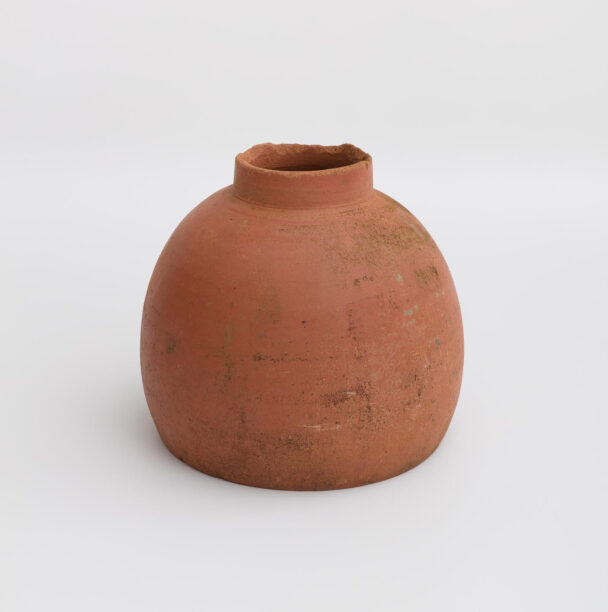
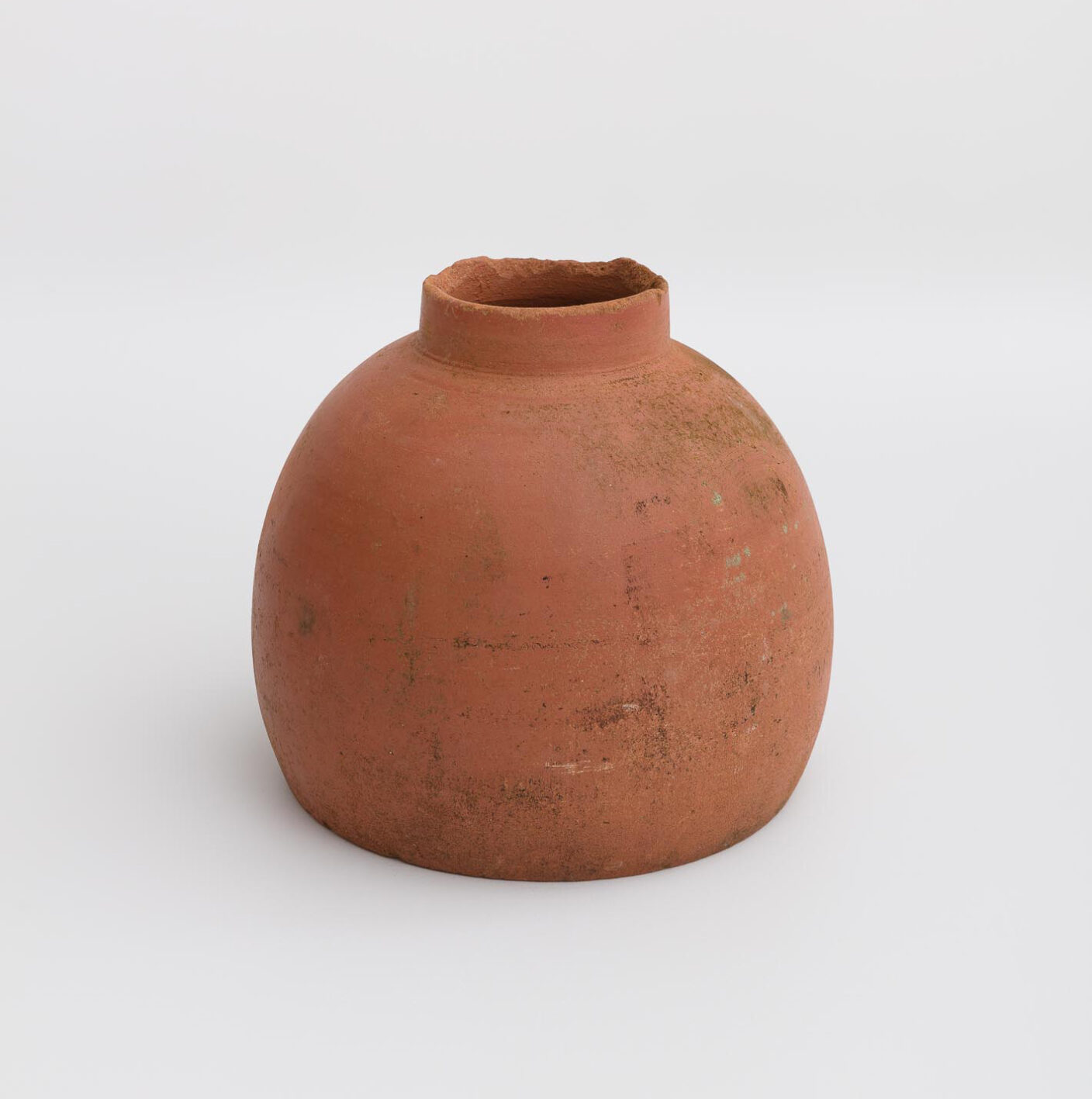
Sem Título
Da série Urnas, Déc. 1980
Cerâmica
26 x 26 x 26 cm
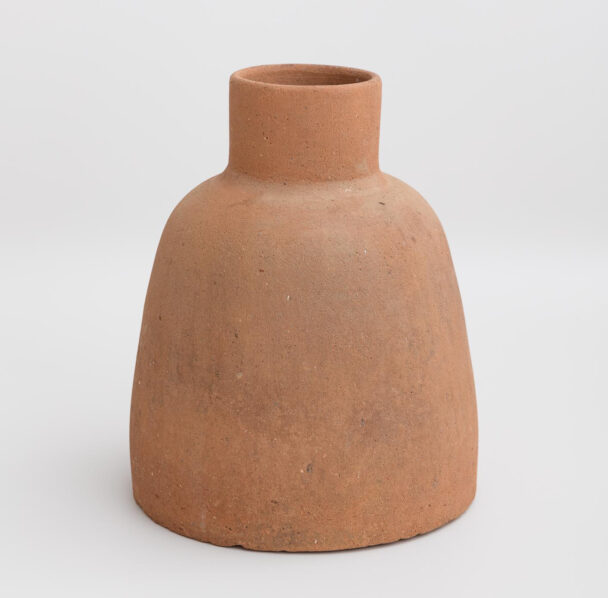
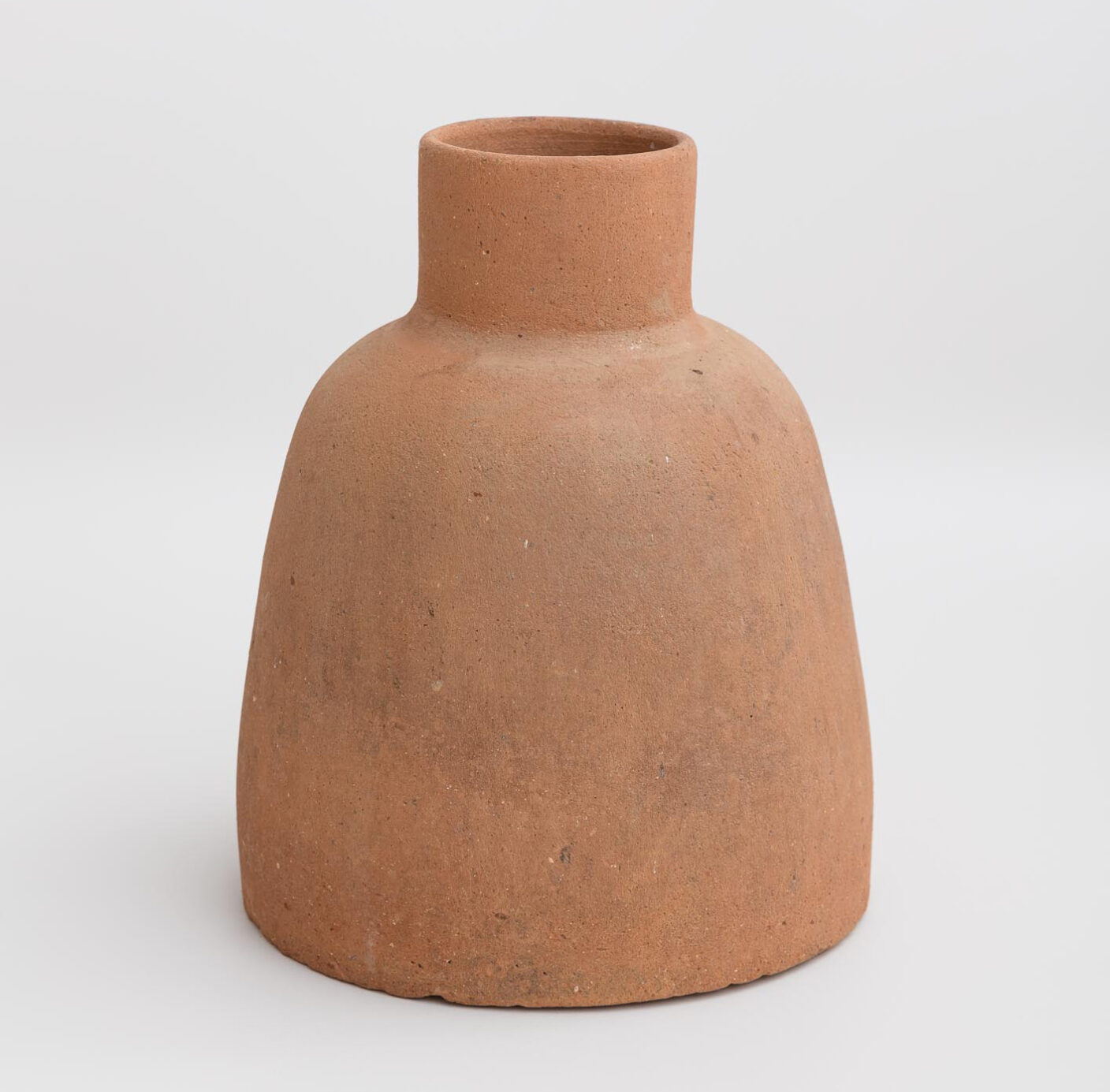
Sem Título
Da série Urnas, Déc. 1980
Cerâmica
34 x 22 x 22 cm


 Português
Português